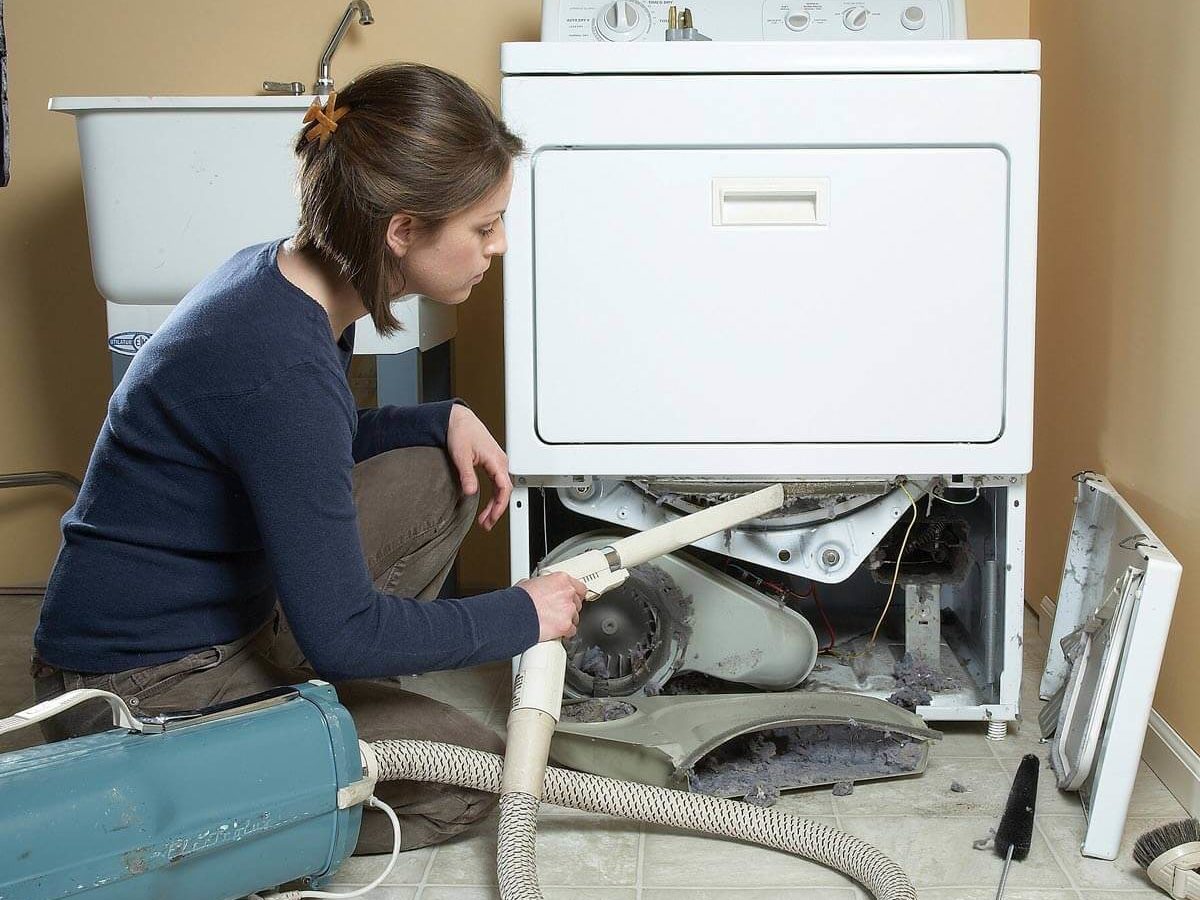
Cleaning Inside the Dryer and Dryer Vent
Built-up lint inside dryer cabinets causes more than 15,000 fires every year. Lint escapes through tiny gaps around the edges of the dryer drum and falls into the cabinet, especially when the exhaust vent or vent cap is clogged and airflow is restricted. The lint can get ignited by electric heating elements, gas burners or even a spark from the motor, and the flames then travel through the lint-lined exhaust vent. To make sure this doesn’t happen in your house, check the exhaust vent and the inside of the cabinet frequently.
Here are the ways you’re shortening the life of your washer and dryer.
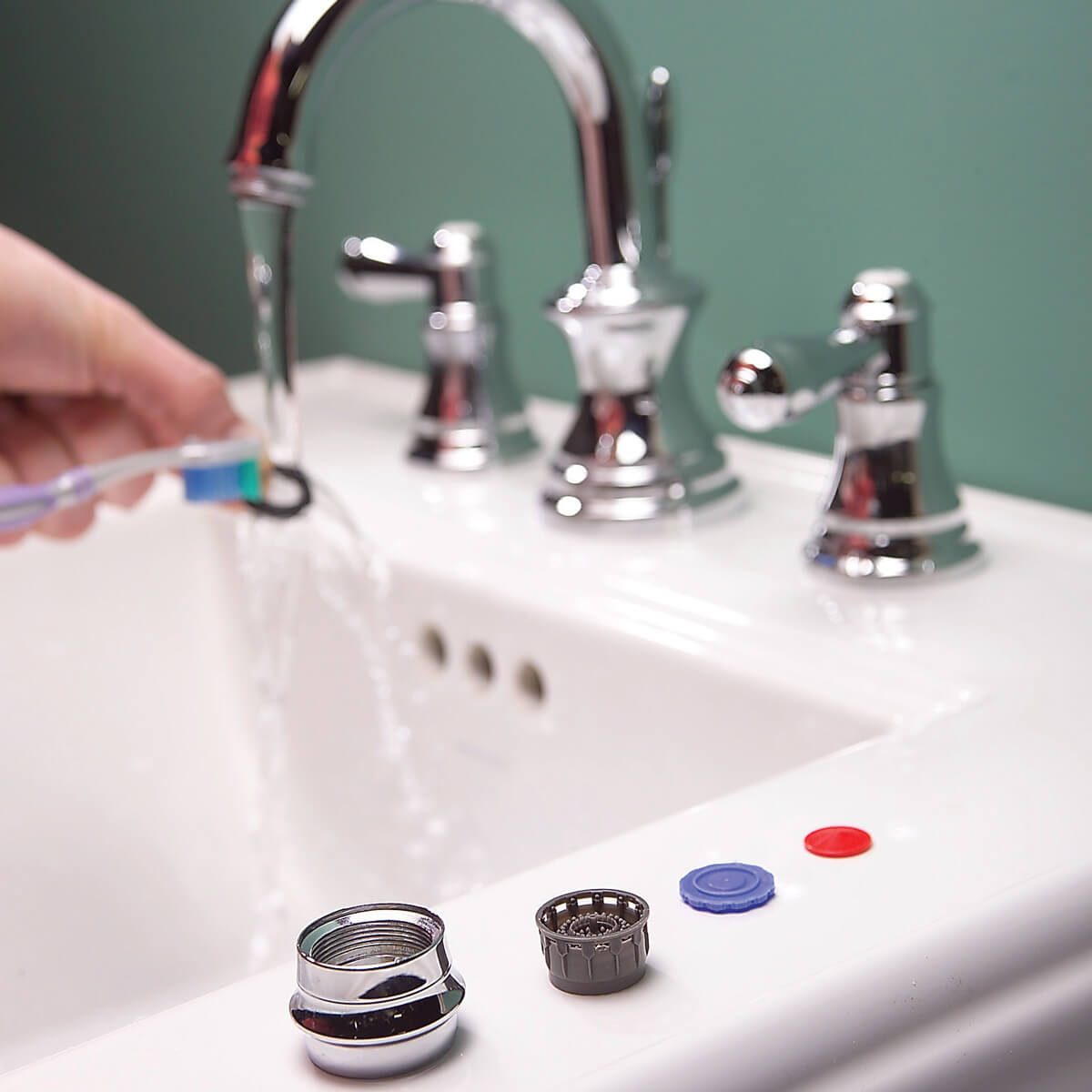
Cleaning Faucet Aerators
Aerators are found on almost every kitchen and bath faucet, and if water flow slows or becomes uneven, clogs inside the aerator are usually the cause. Fortunately it’s an easy problem to fix.
Check out the things you should be cleaning with a toothbrush.
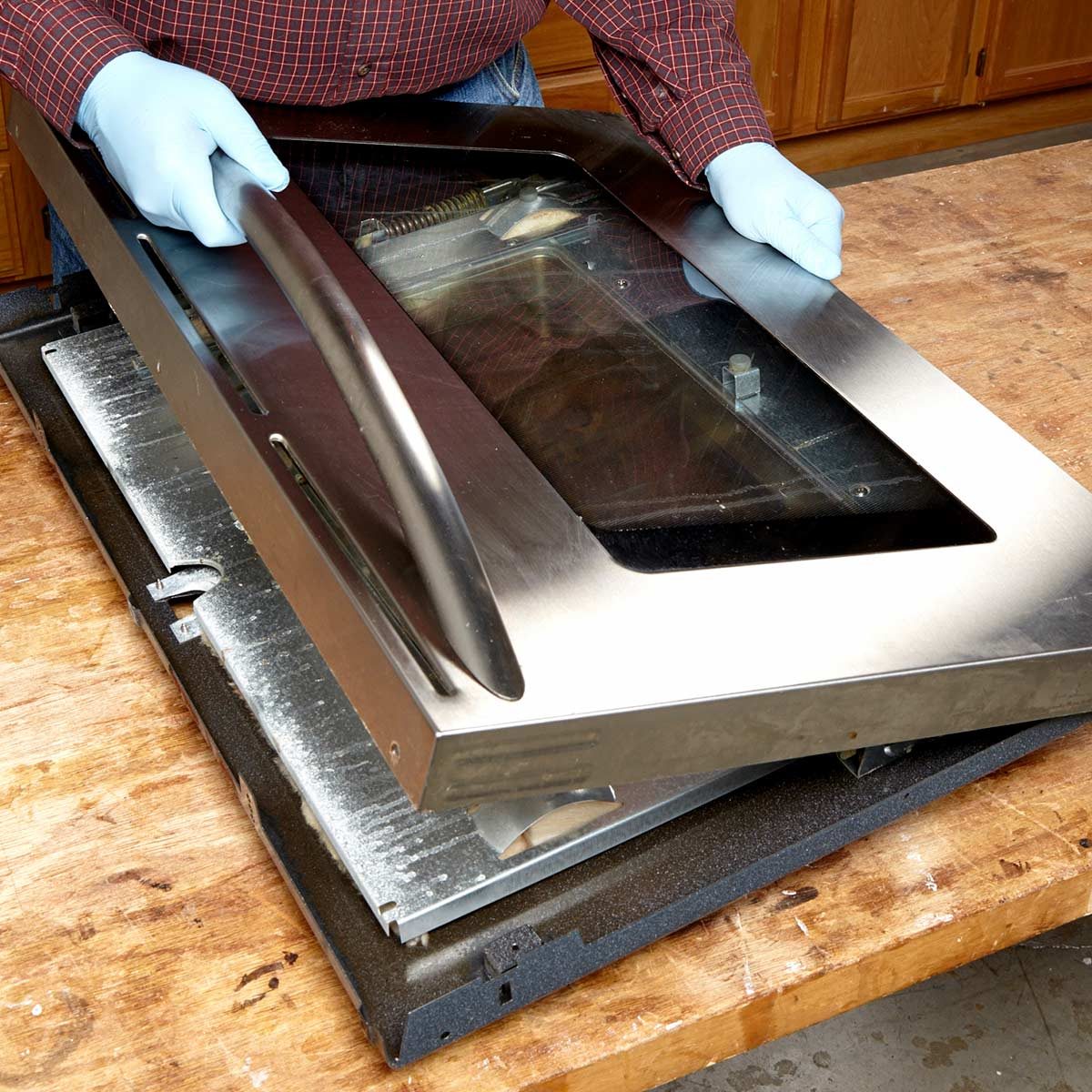
Cleaning Oven Door
Built-up spills and remnants of old food and liquids inside ovens can cause smoke and smell issues. It’s important to clean up big spills as they happen, and make it a habit to put your oven through its cleaning cycle regularly. But when you’re really trying to make your oven shine, you might need to go further.
Discover the little-known trick to cleaning your oven without scrubbing.
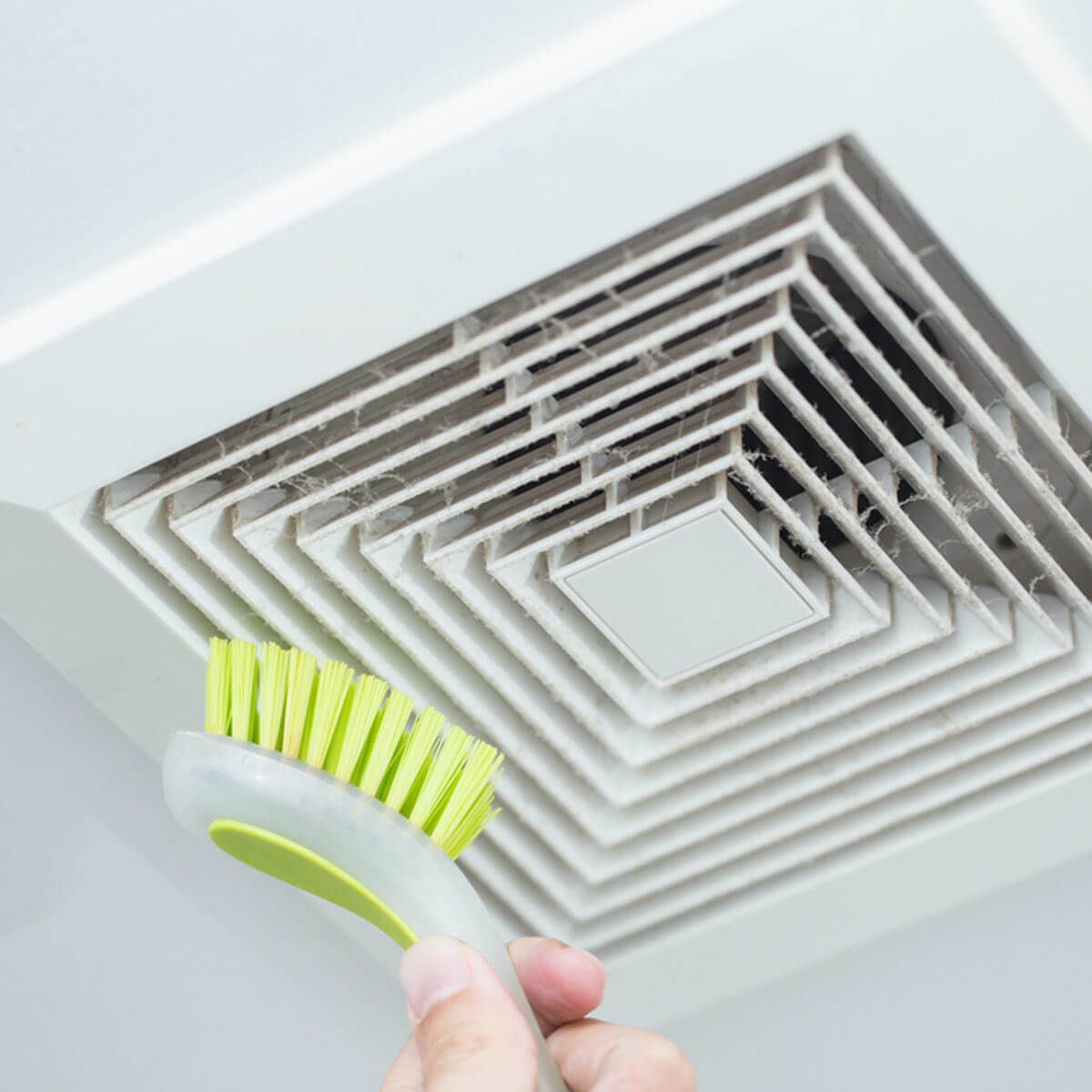
Cleaning the Bath Fan
Household dust, moisture and humidity combine to cake bathroom exhaust fans with debris. Often located on the ceiling, you may not notice it’s even dirty. Luckily, bath fan grills are easy to clean. Grab the edge of the cover and pull down. Squeeze the springs to release them from the slots and remove the cover.
These bathroom design fails will make you do a double take!
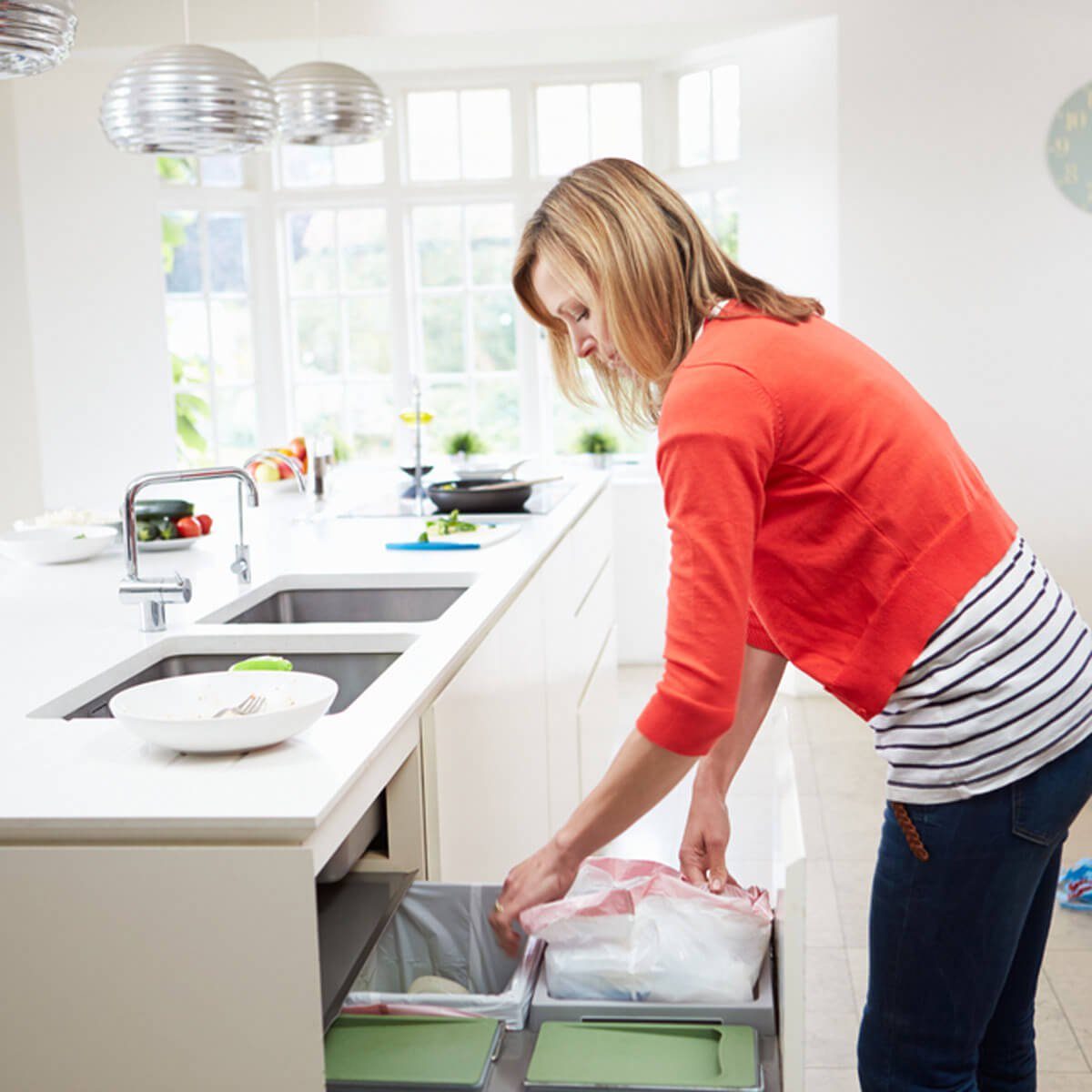
Washing the Trash Can
Sure, you put a garbage bag in there but that doesn’t mean your trash can is free from germs. Just think of those times the trash leaked and who knows what lingers in the bottom of that bin. And each time you take out the trash, just spray the inside of the trash can with a disinfectant. Once a month, wash it out with bleach and cleaning with hot water.
Here are the easiest ways to eliminate the most offensive pet odours.
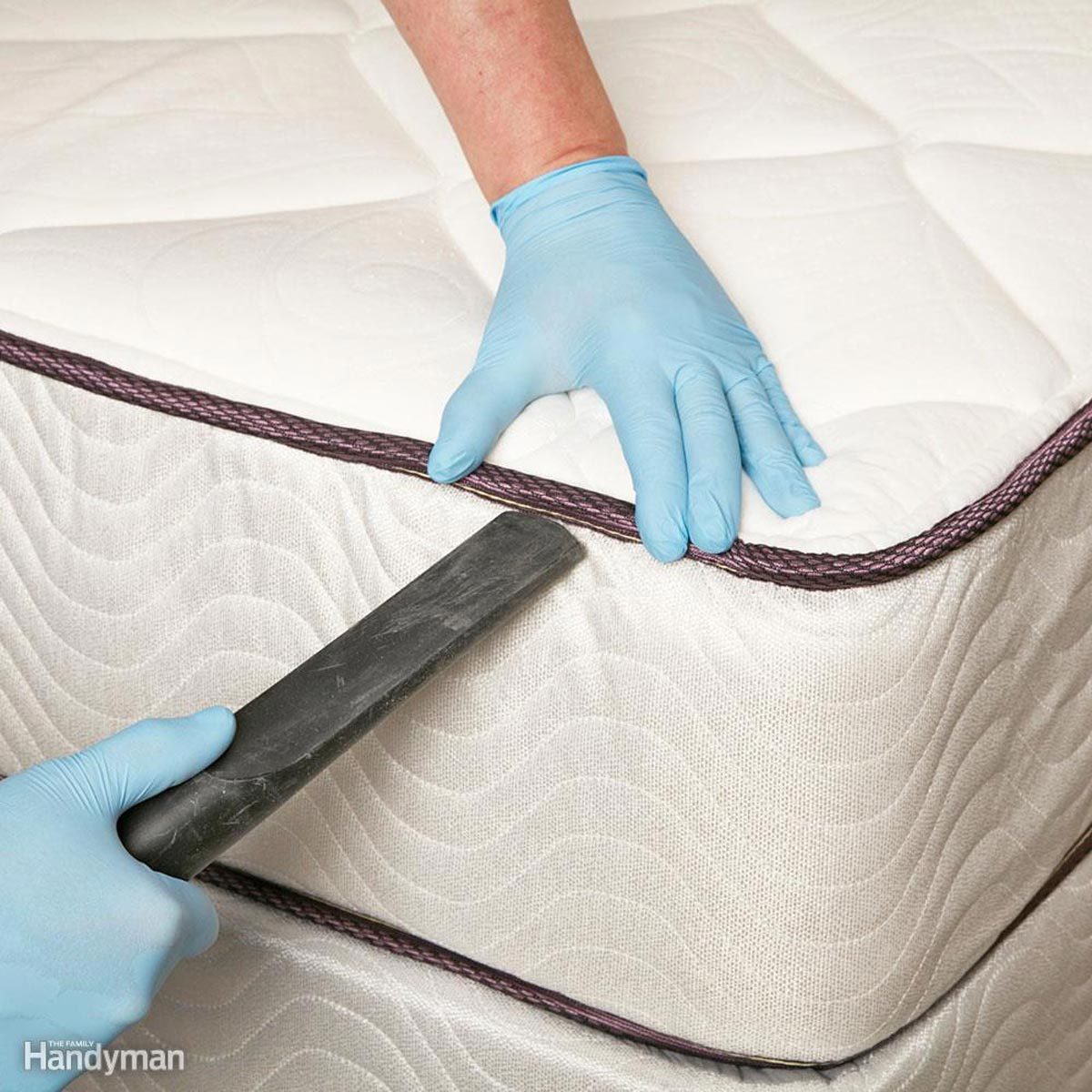
Vacuuming a Mattress
Despite being covered with sheets and a mattress cover, your mattress still gets dirty. It’s a good idea to periodically vacuum it and spot clean any stains that may appear. Airing it out outdoors in the sunshine for a few hours can also do wonders for removing any lingering musty smells.
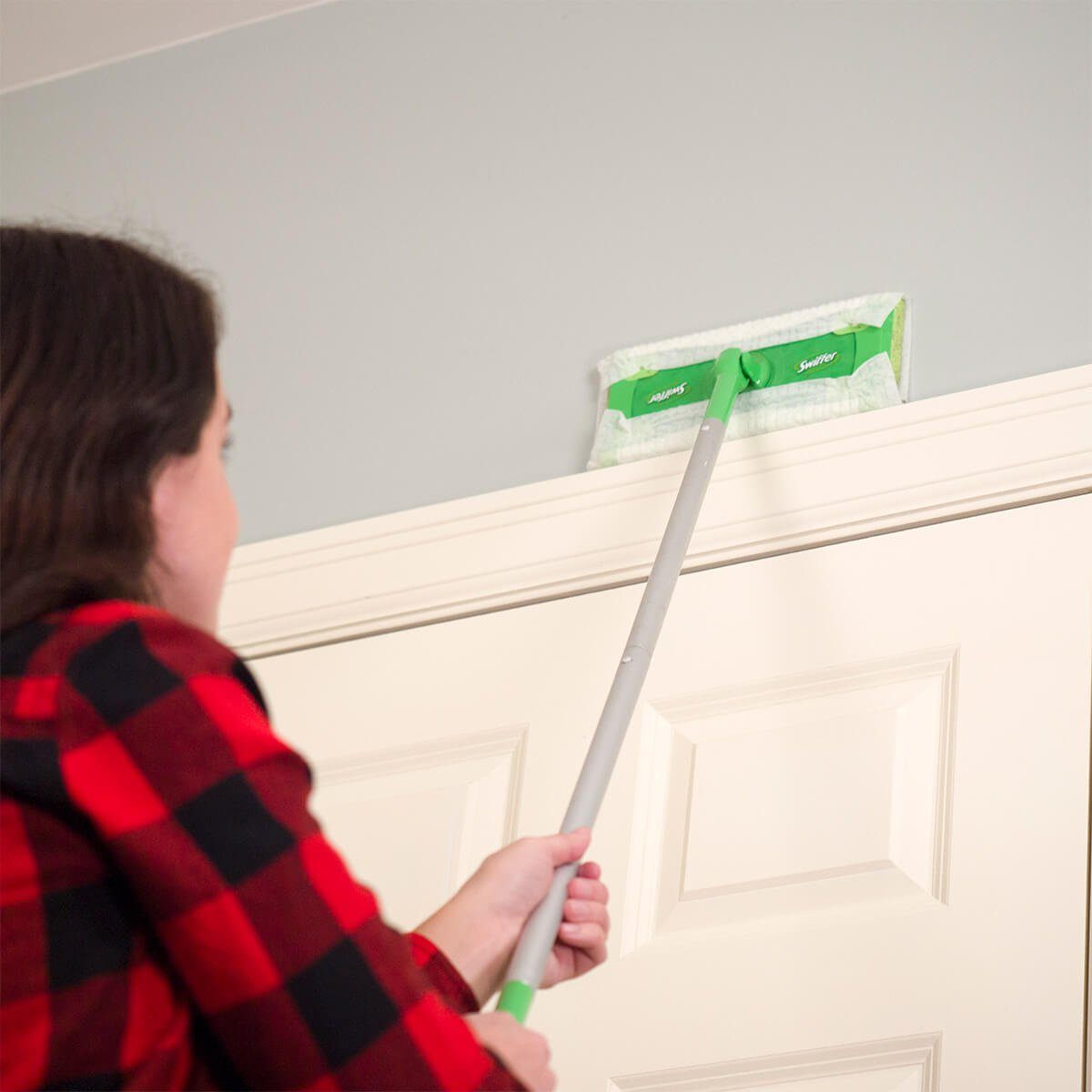
Wiping Down Walls
A Swiffer Sweeper floor mop is useful for more than just cleaning hard floors. Use it to dust interior walls and trim, too! Attach a dry cloth to the rectangle end and press it along walls and trim. You can pick up dust, cobwebs and dirt safely, without having to step on a ladder.
Don’t miss these interior painting tips for flawless walls!
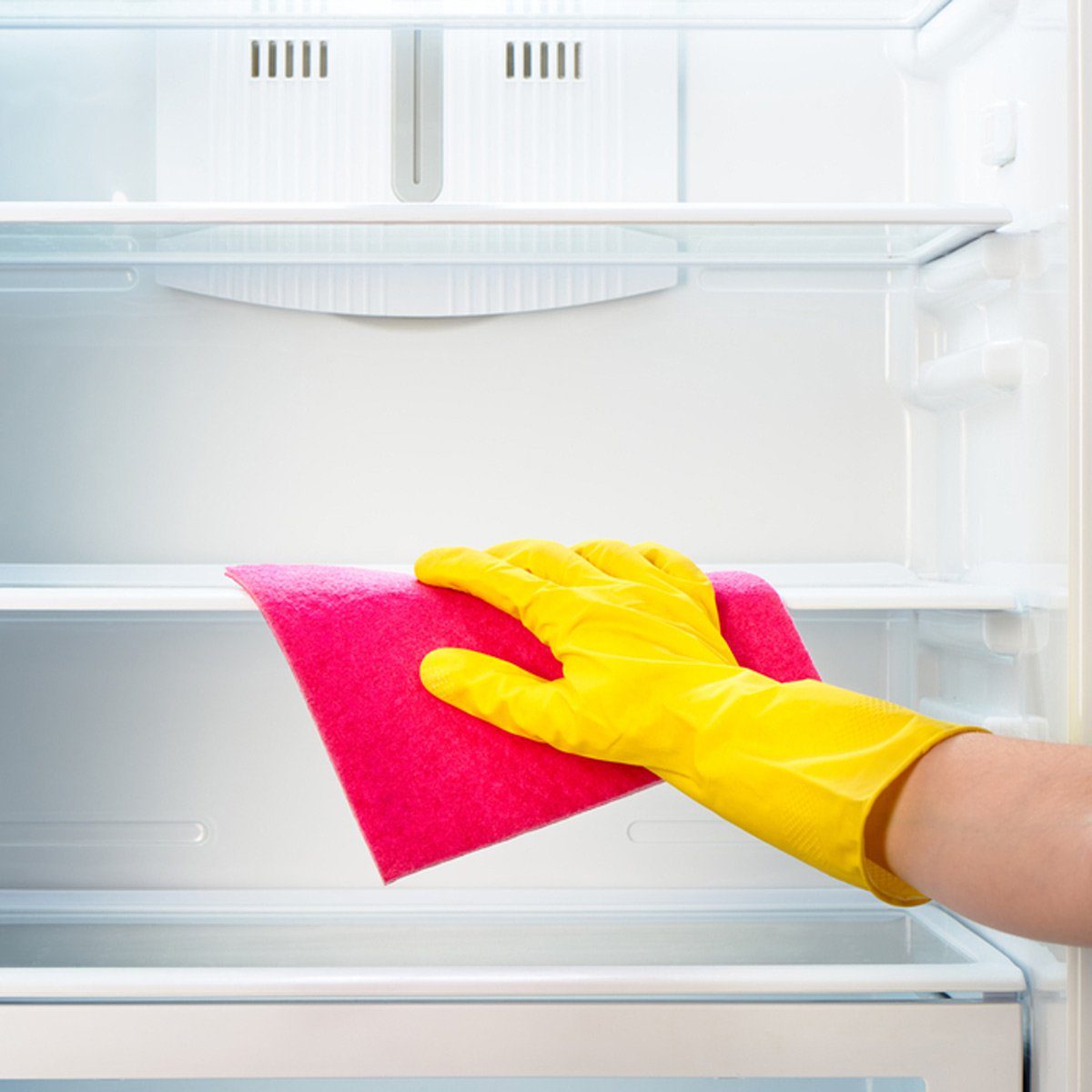
Doing Fridge Maintenance
Spend 30 minutes on these simple maintenance steps to keep your fridge running in tip top shape. It’s hard to believe, but six simple maintenance steps will prevent almost 100 percent of refrigerator breakdowns and eliminate those service calls. Take these steps and you can forget about spoiled food, lost time waiting for repair people and shelling out $70 an hour plus parts for the repair itself.
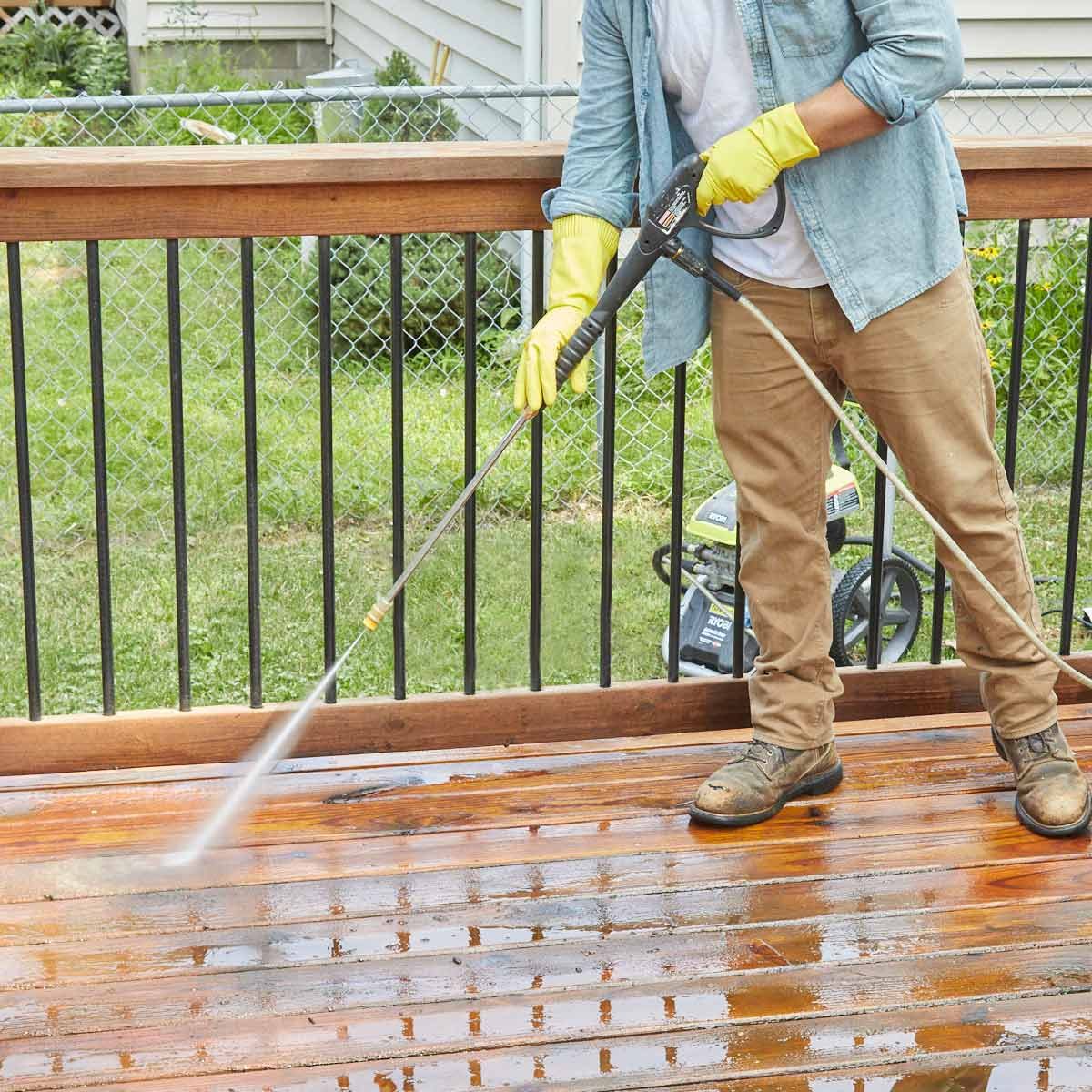
Washing the Deck
Exposed to the elements year-round, your deck does take a beating. Learn how to clean your deck properly and even give it a proper update (in less than eight hours).
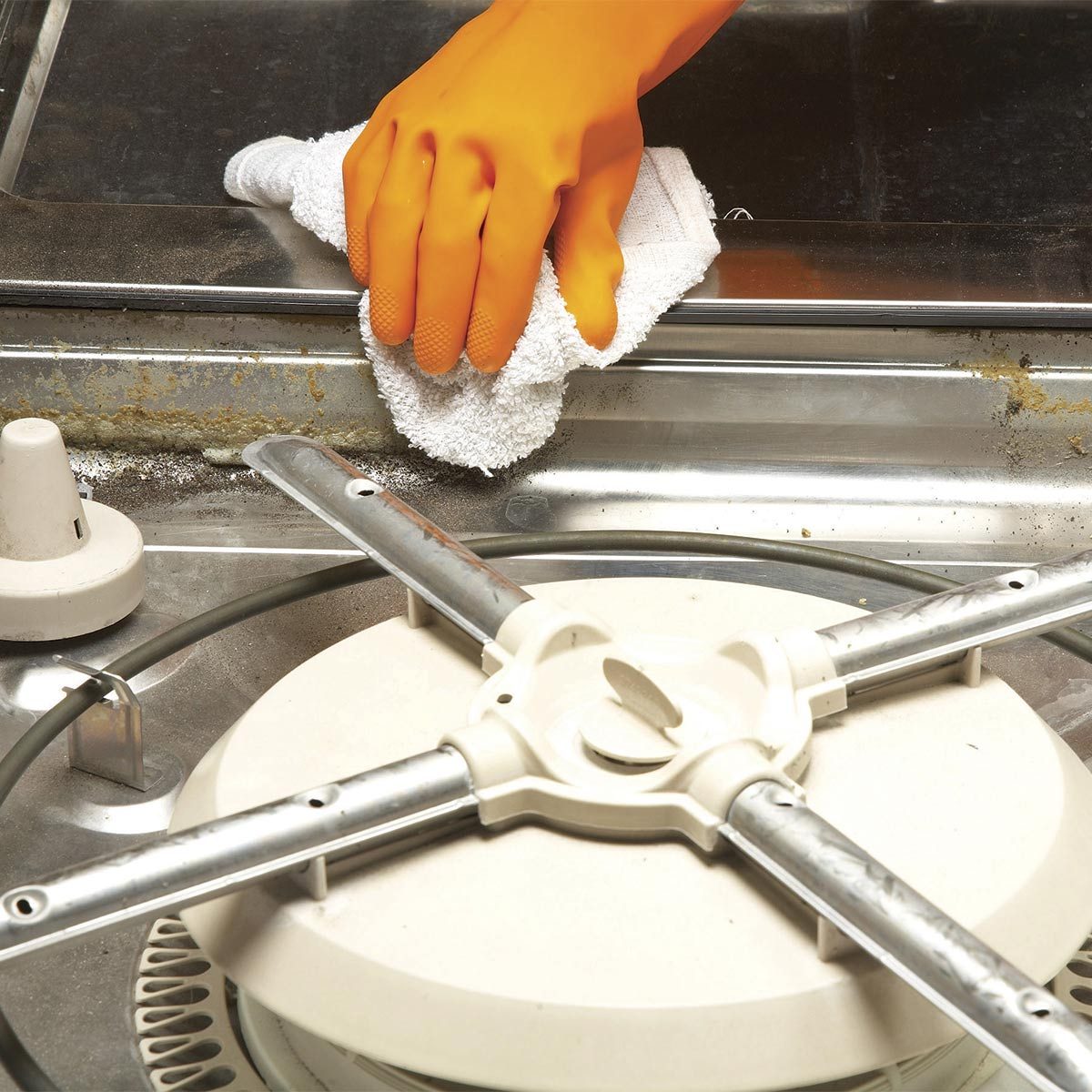
Washing the Dishwasher
You’d think your dishwasher, post dishwashing, would already be clean. But you’d be wrong! Food bits find their way into all the nooks and crannies of your dishwasher, leading to bad smells and eventually, your dishes not getting clean.
Here are the ways you’re shortening the life of your dishwasher.
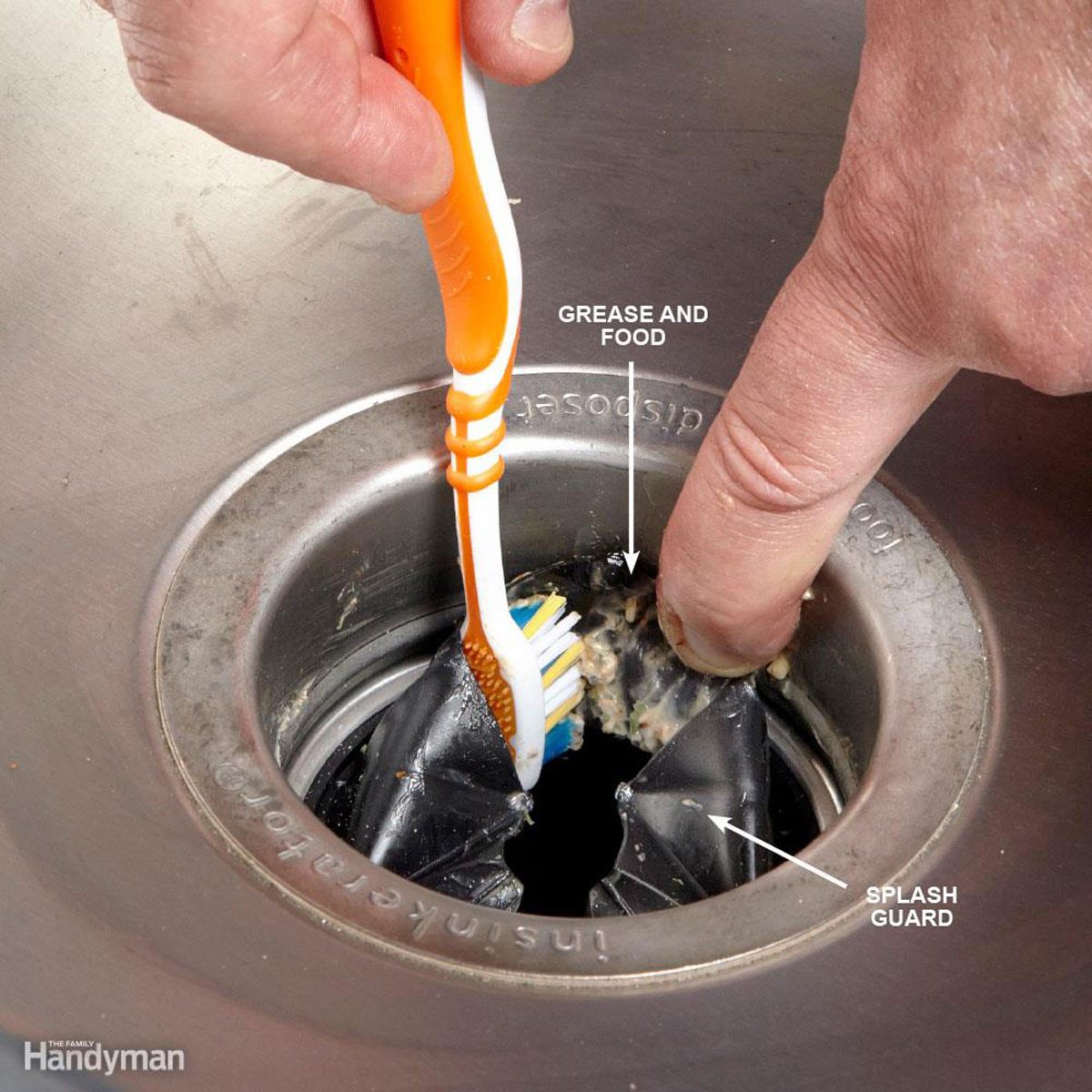
Cleaning the Garbage Disposal Splash Guard
Does your kitchen sink smell bad? Is it coming from your garbage disposal? Here’s how to clean a garbage disposal and get rid of those disgusting odours. The key? Cleaning UNDER the splash guard.
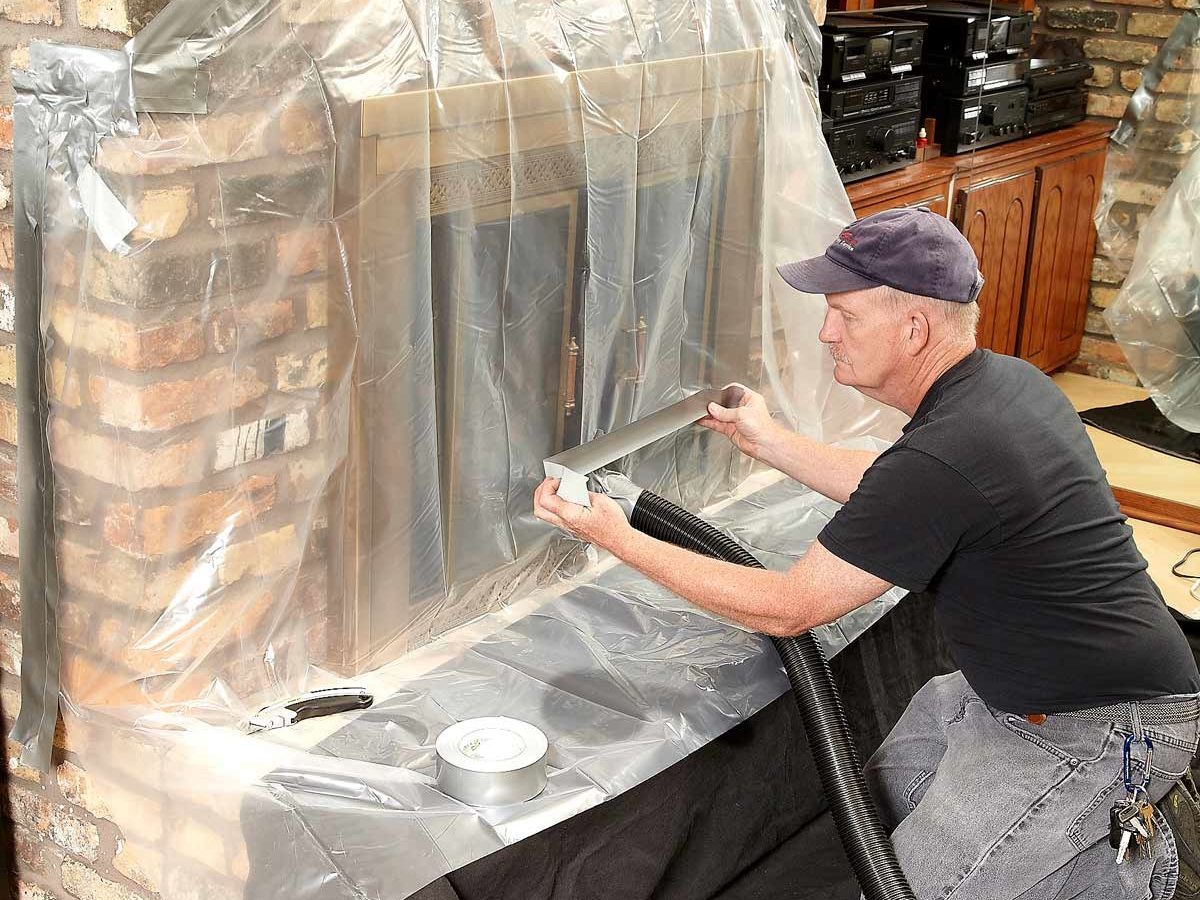
Checking the Chimney
Regular cleaning with a shop vac and standard chimney cleaning tools will prevent dangerous creosote fires.
Find out the most common causes of house fires in Canada.
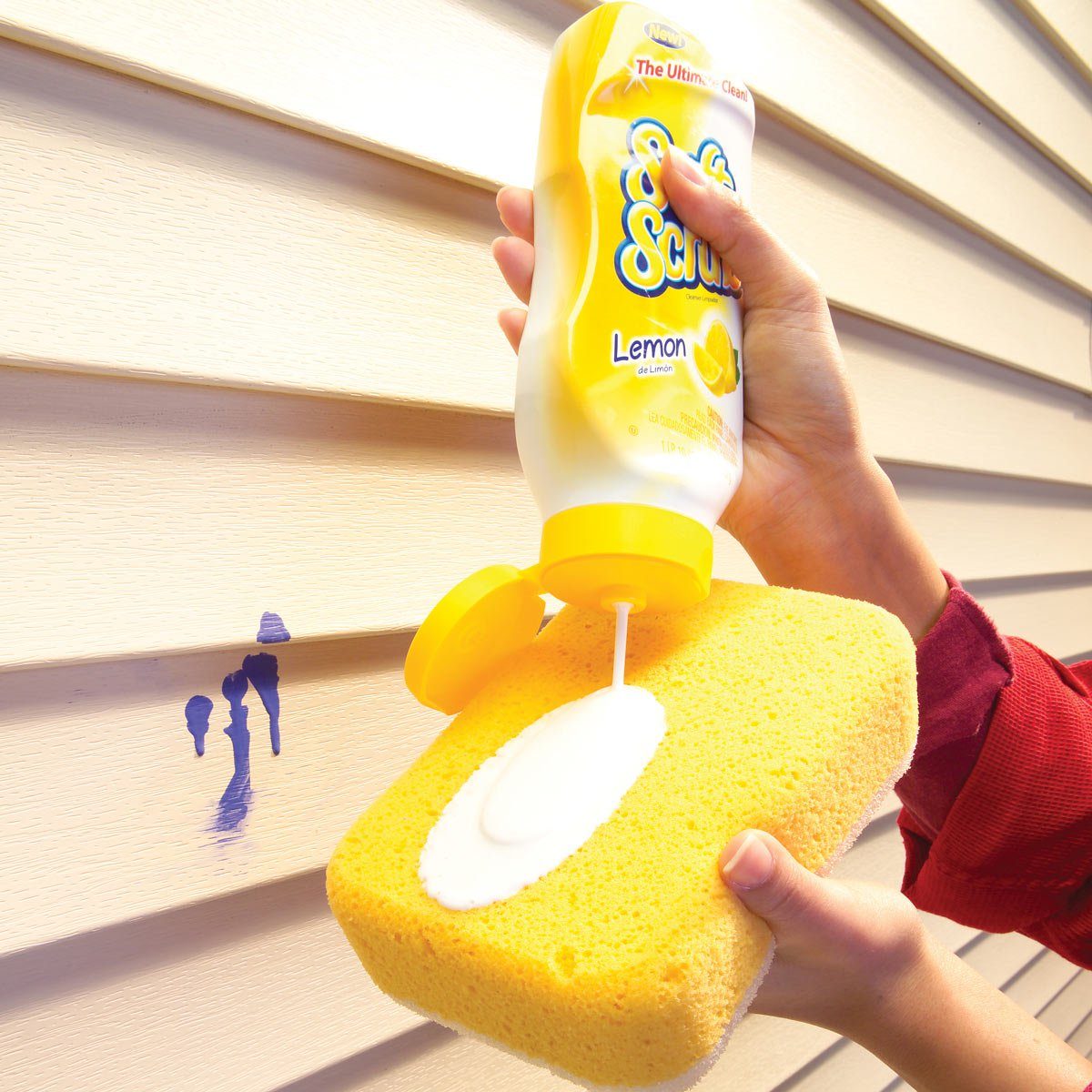
Washing Vinyl Siding
Though vinyl siding tends to stay fairly clean, occasionally you’ll develop harder to clean stains that need more than just a quick spray from your hose or pressure washer.
Learn how to clean vinyl floors and protect them from dents and scratches.
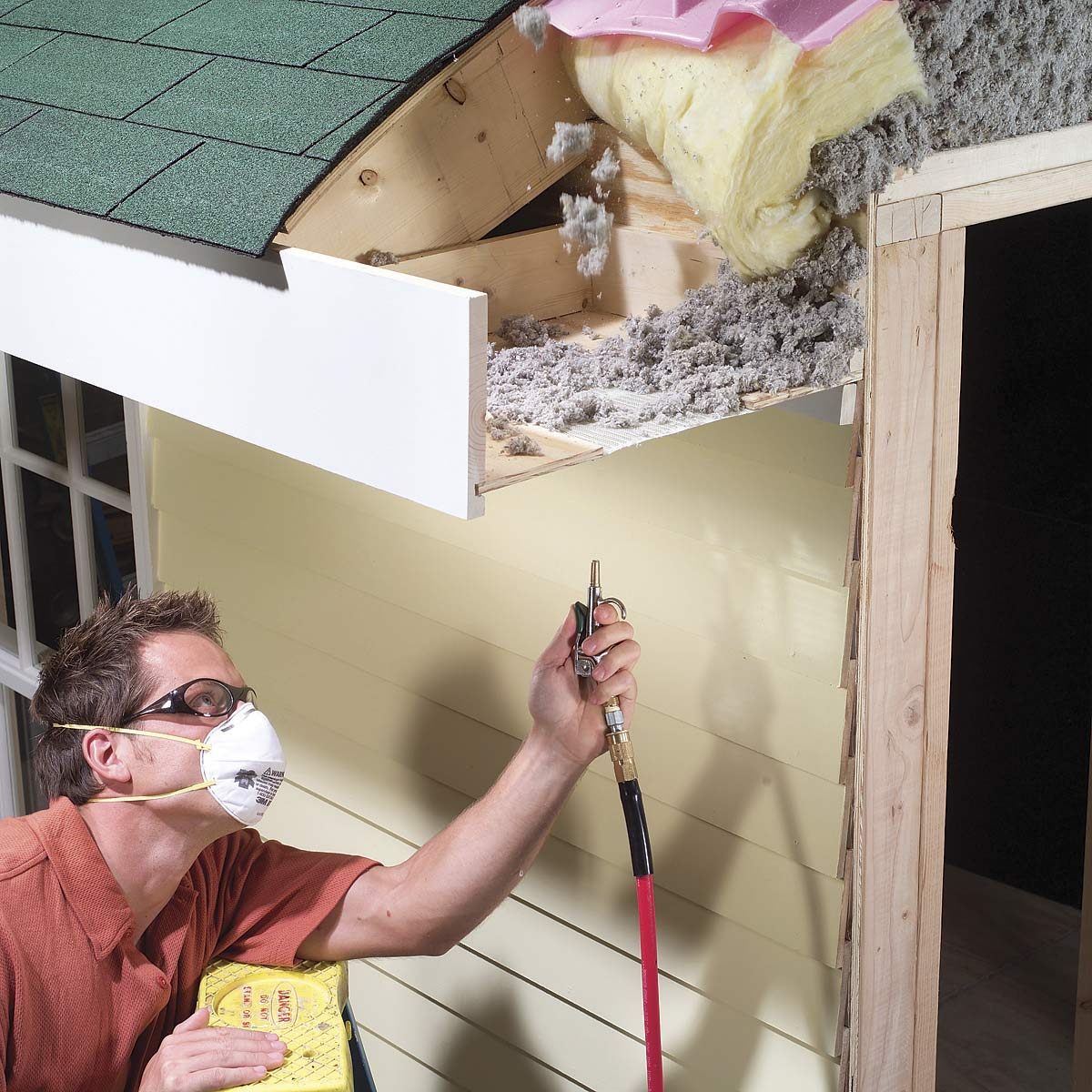
Blowing Out Soffit Vents
Blow out debris from your soffit vents to maintain good attic ventilation. It’ll save on air conditioning costs in summer and protect your roof from condensation in winter.
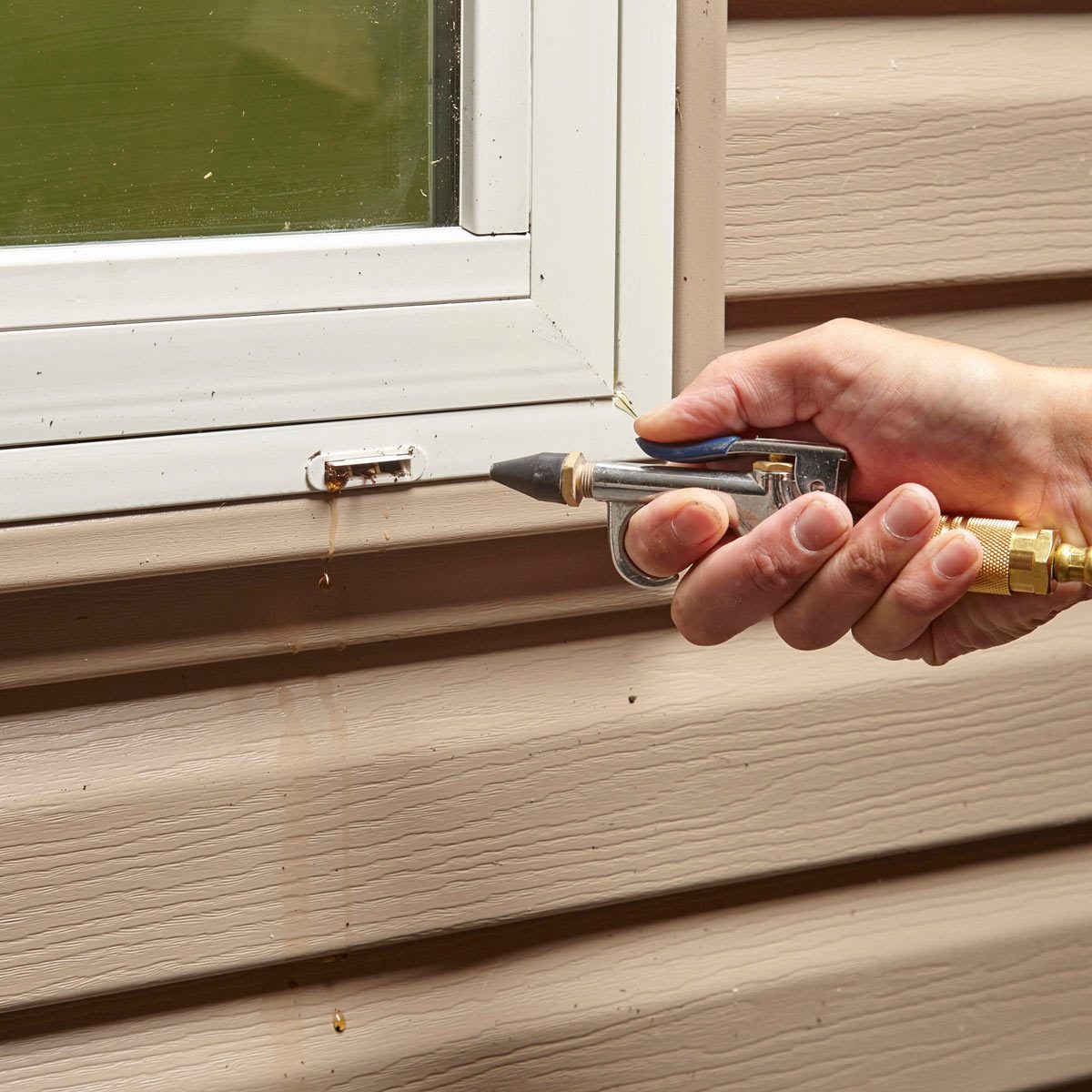
Cleaning Weep Holes
Weep holes may be the tiniest feature of many sliding windows and vinyl replacement windows, but they serve a big function. The little holes, located on the exterior bottom of the frame, are an outlet for rainwater to drain away from the home, but they often can become clogged up with debris. To make sure they’re working properly, spray the outside of the window with a garden hose – a steady stream of clean water should exit from the holes. If it doesn’t, use a wire hanger or compressed air to force the blockage out. Re-test with fresh water to ensure they’re completely cleaned.
These are the mistakes you should avoid during a home remodel.
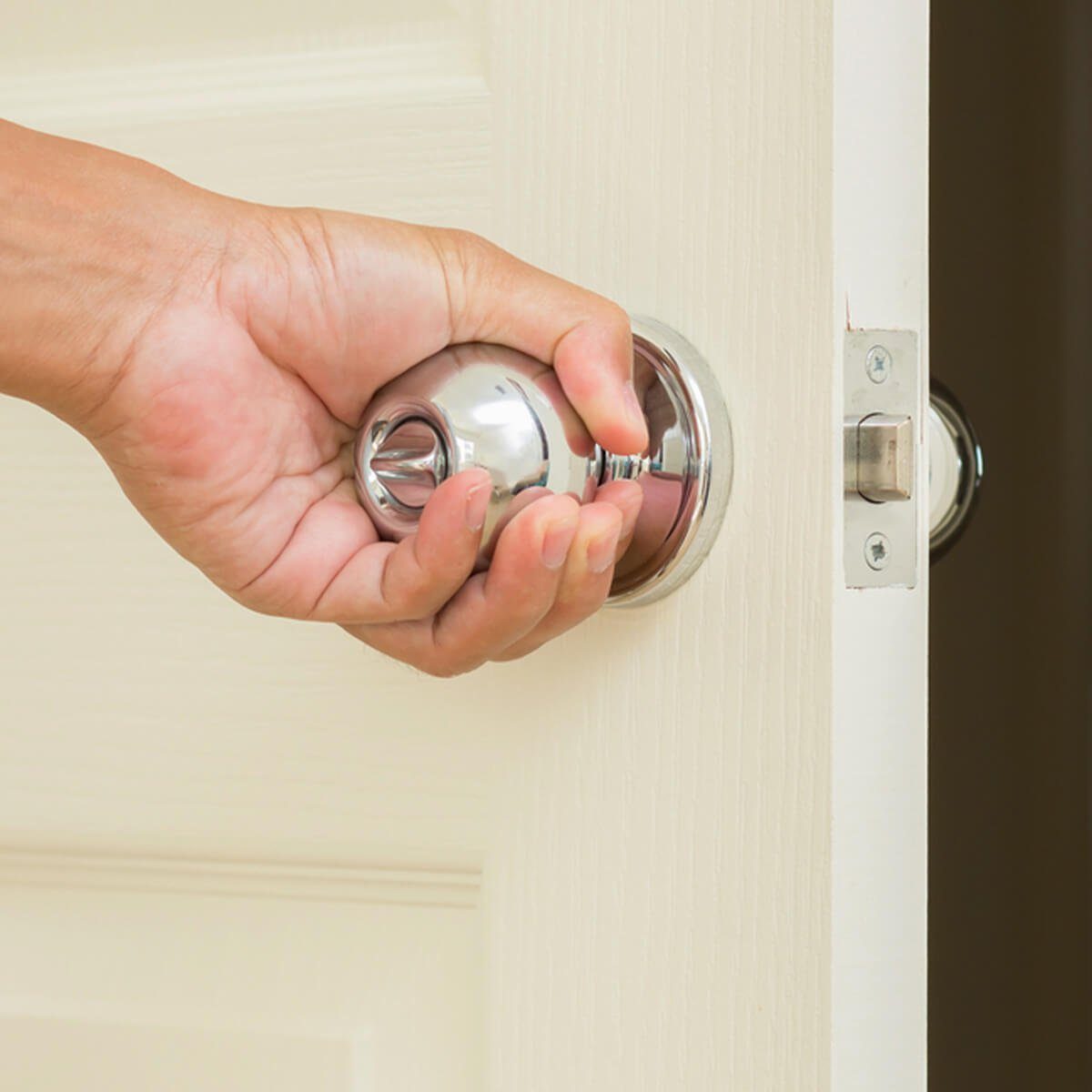
Wiping Down Door Knobs
We all have them, and we all touch them. But when was the last time you cleaned your door knobs? It only takes a few minutes to kill any lingering germs (use a bleach-based cleaner)—just be careful not to get any on wood doors or trim, because it could affect the finish.
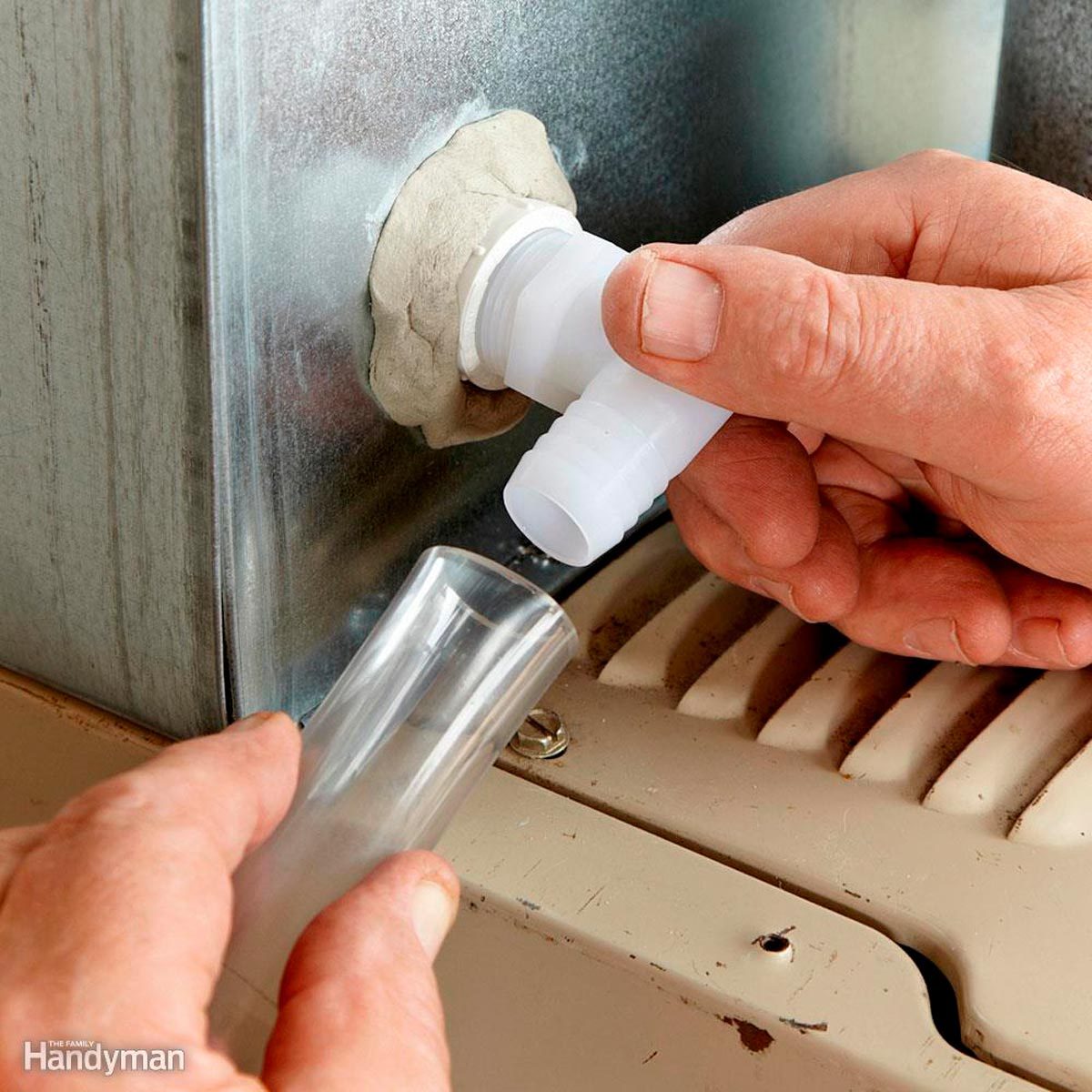
Checking the HVAC Condensate Line
When you see water puddling around the furnace with the A/C running, you have a clogged condensate drain tube. Condensation from air conditioning coils contains bacteria that can form slime and clog the condensate pan drain tube.
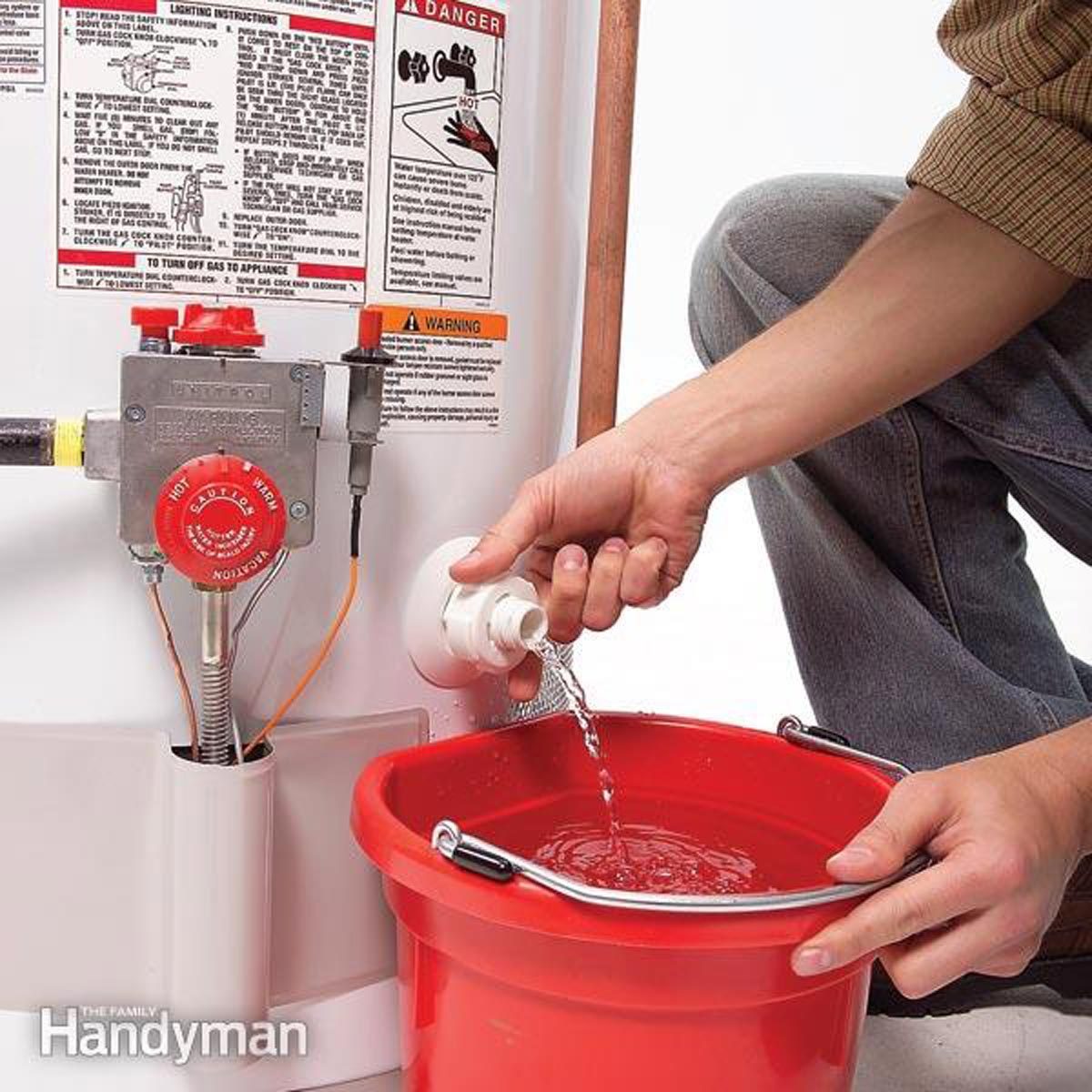
Monitoring Your Water Heater
Extend the life of your water heater tank and maintain your water heater’s efficiency and safety with a few minutes of basic maintenance once a year.
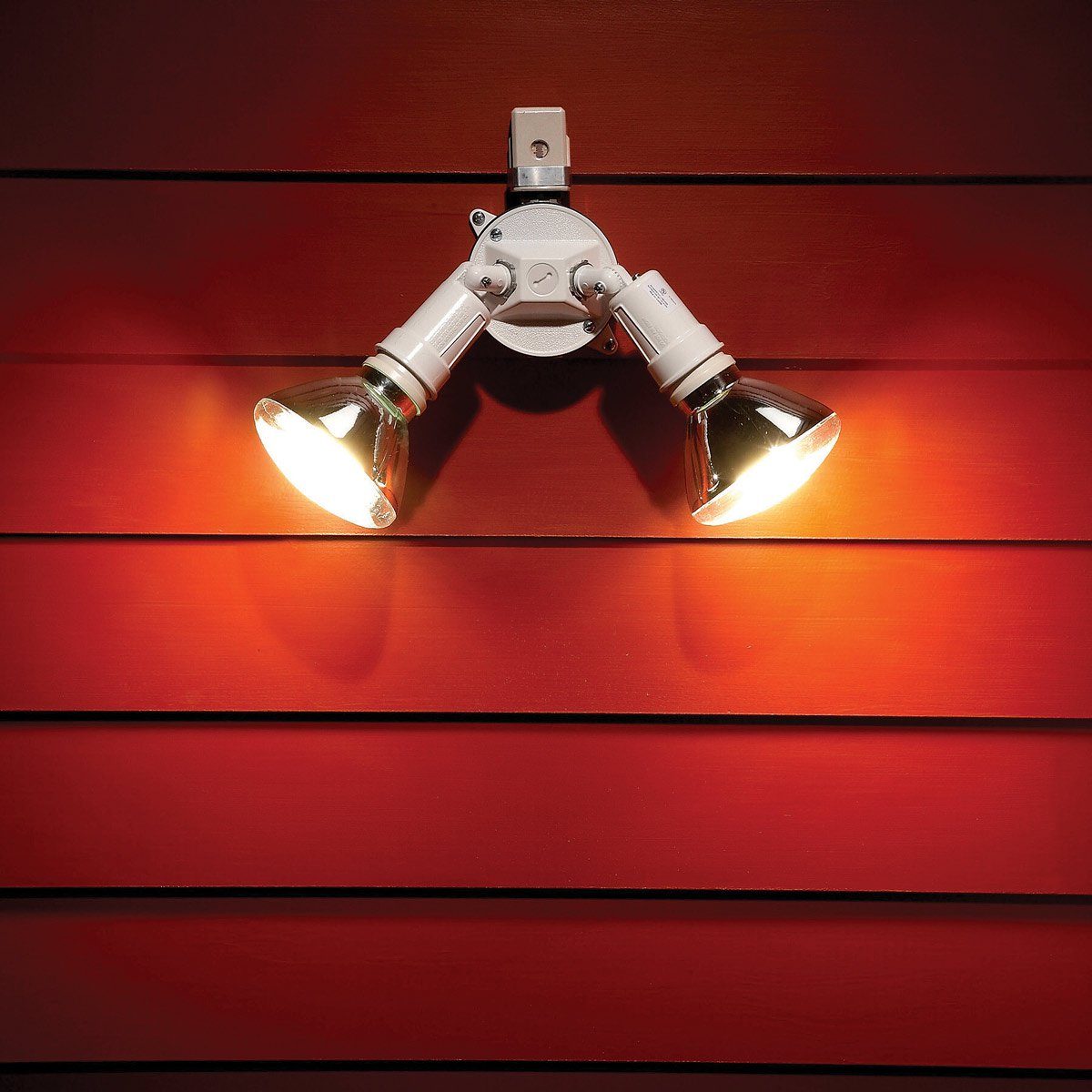
Cleaning Outdoor Lights
Like anything that lives outdoors, your outdoor light fixtures get dirty. Get in the habit of cleaning and inspecting your outdoor lights once a year, especially checking for any pest nests. The heat provided by outdoor lights makes an ideal environment for mice and other rodents.
Follow these simple steps to prevent a ladybug infestation.
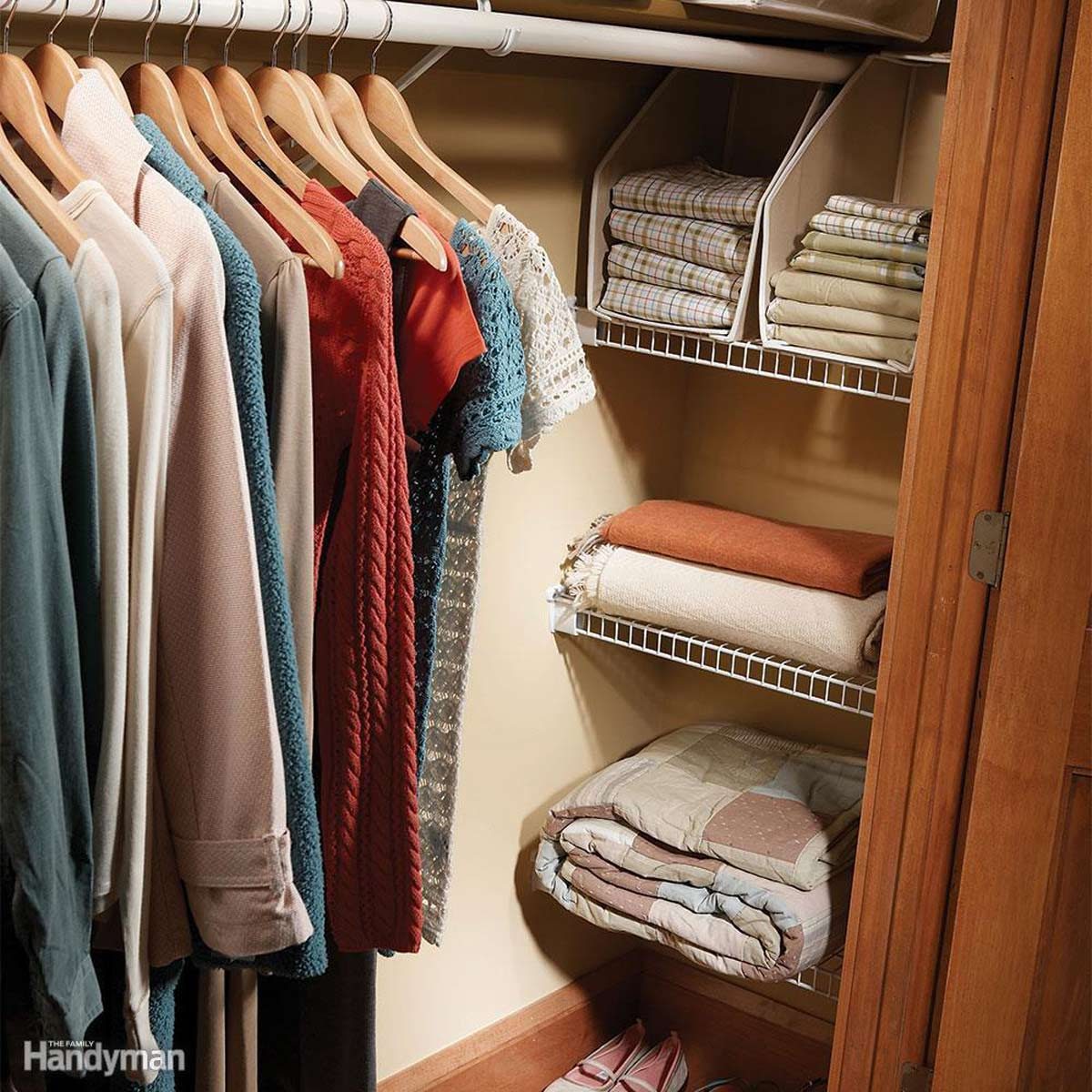
Cleaning Closets
Because floors are often covered with stored items, and clothes block access to the walls, closet cleaning is often neglected. But who wants to put clean clothes in a dirty closet? Once a year (or once a season) make it a point to wipe down/dust walls, trim and shelves in your closet and give it a good vacuum.
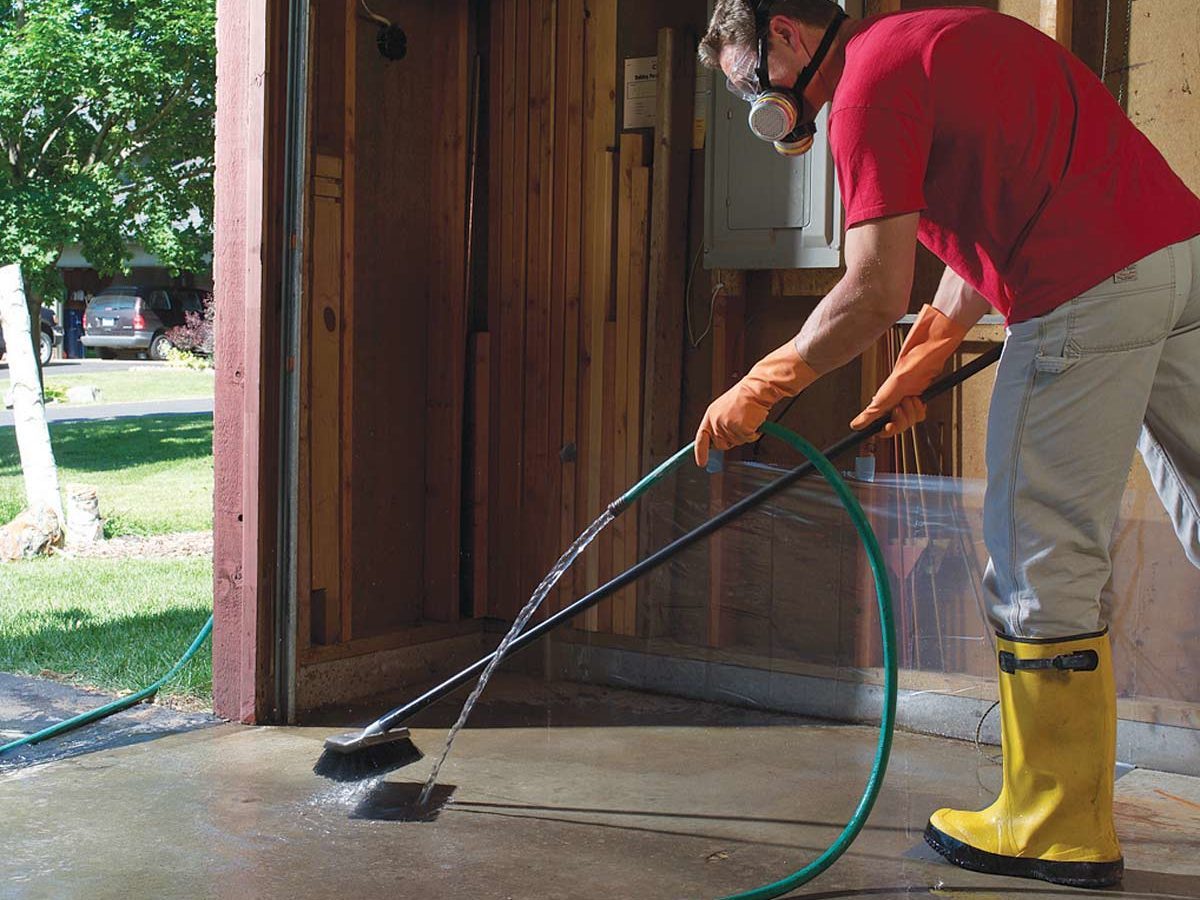
Removing Garage Grim
Your garage floor is bound to get dirty, but if you haven’t swept or washed it in years, it’s time to clean it. Not only will your garage feel cleaner, you’ll remove all kinds of nasty stuff (rocks, salt, dirt and more) that you might otherwise end up tracking into your house.
If you want to keep your home pest-free and your belongings in good condition, never store these items in your garage.
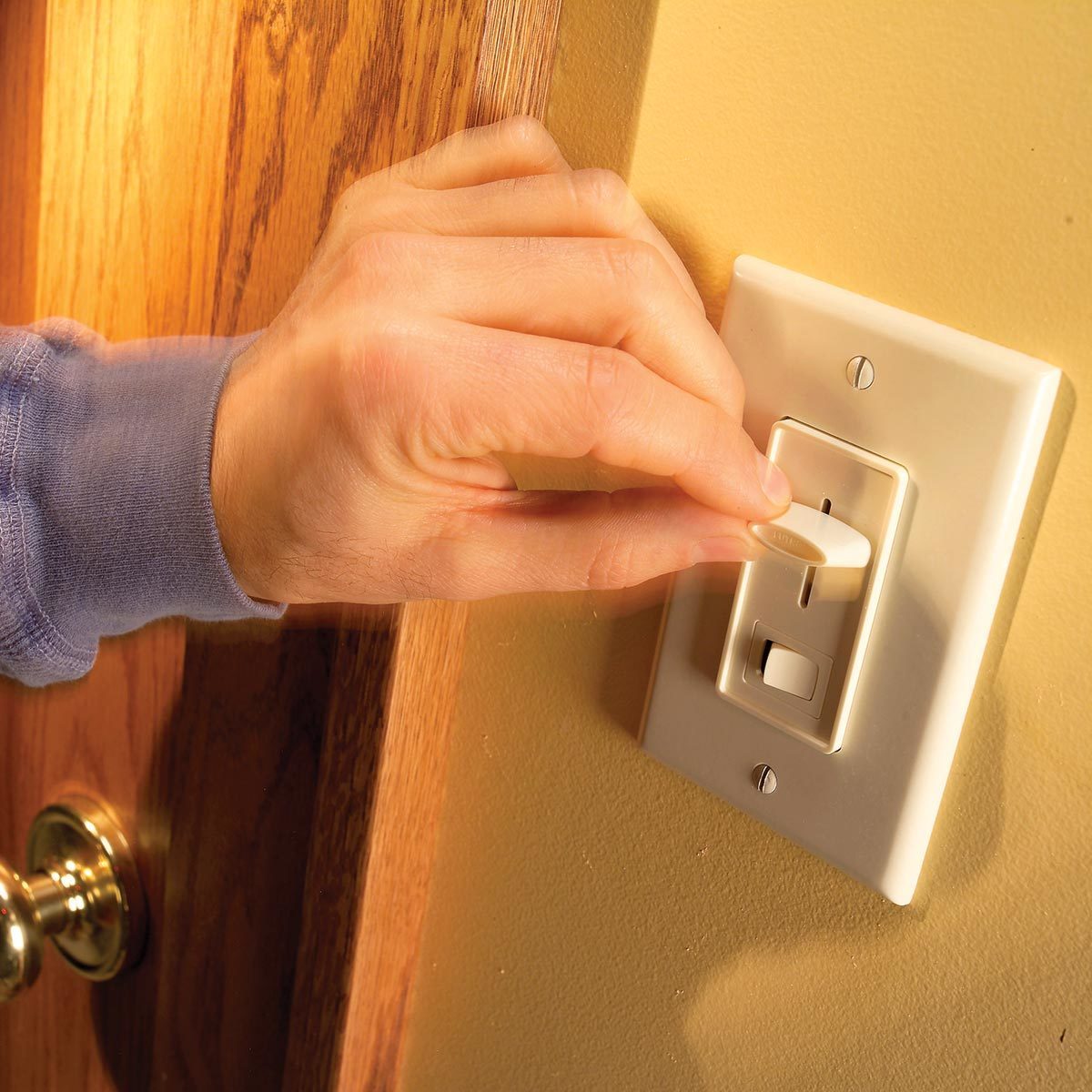
Wiping Down Light Switches
Just think about how many times a day you use a switch on the lights. And no matter how clean you think your hands are, each time you touch the light switch, you’re spreading germs. Wipe them down regularly with a disinfected spray or cloth.

Clearing Out the Keyboard
In addition to the germs on your hands, your keyboard collects food crumbs, hair and dead skin cells. Every two months, use compressed air to get all the crumbs out. And then use a cotton swab dabbed in a little rubbing alcohol to wipe between the keys. Cleaning the keyboard regularly is a good way to stop germs in their tracks.
Check out more home items you should be cleaning every month.
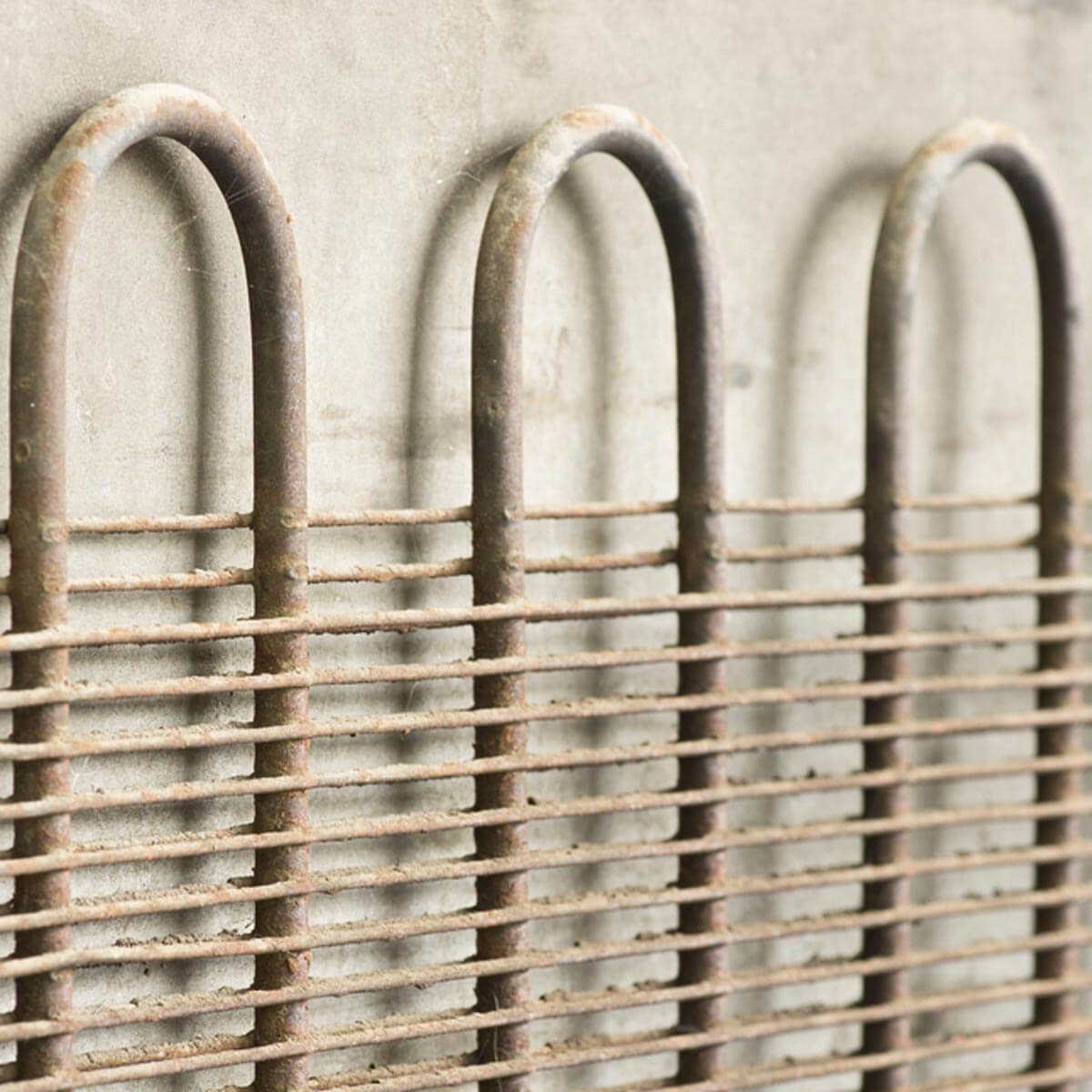
Cleaning the Coils
When was the last time you cleaned behind the refrigerator, including the coils? Periodically cleaning the coils takes just 15 minutes and can help reduce electricity bills while also extending the life of your refrigerator. So try cleaning the coils every six months.
Here are the ways you’re shortening the life of your refrigerator.
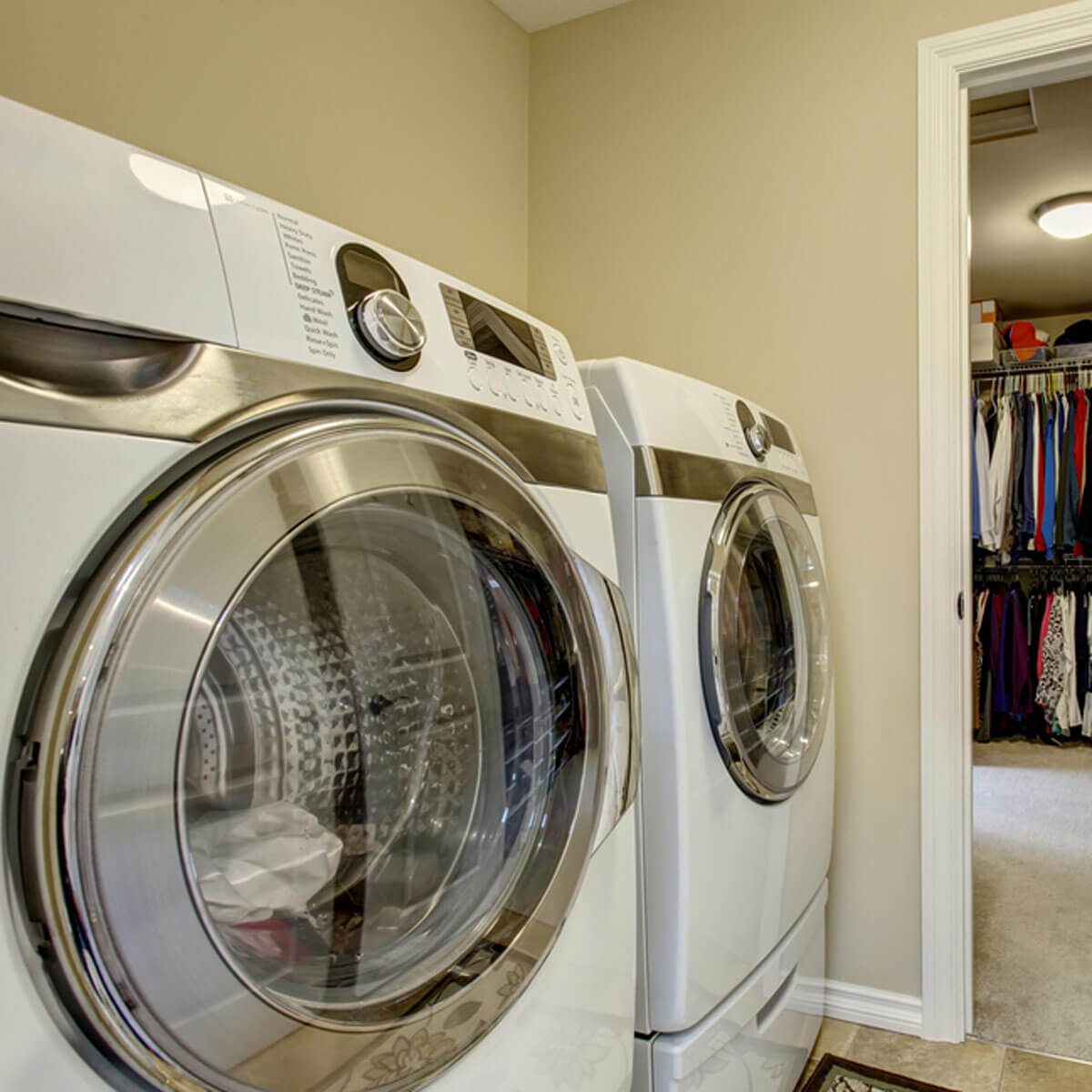
Washing the Washer
Just because you’re washing clothes regularly, it doesn’t mean your washer don’t need cleaning. Once a month, run an empty load with just hot water and bleach.
Find out how to tell if you’re using too much laundry detergent.
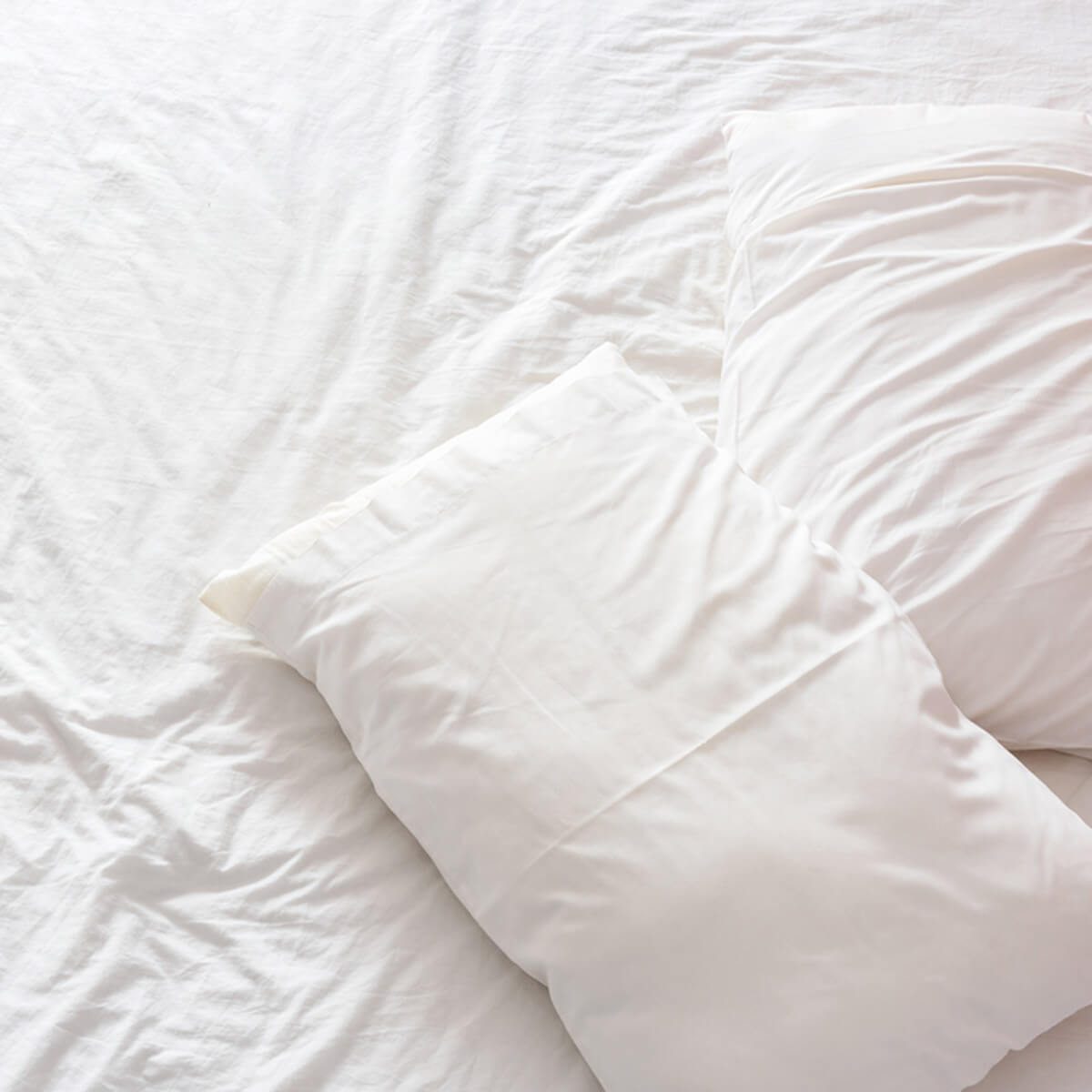
Cycling Through Pillows
You don’t need to wash your pillows every week like you do your sheets, but every three months or so, throw them in the washing machine on a gentle cycle with hot water to remove dead skin cells and sweat. And when drying, add a couple clean tennis balls to help speed up drying and keep the pillow guts from clumping.
Learn the secret ingredient in your fridge that can help whiten your laundry without bleach.
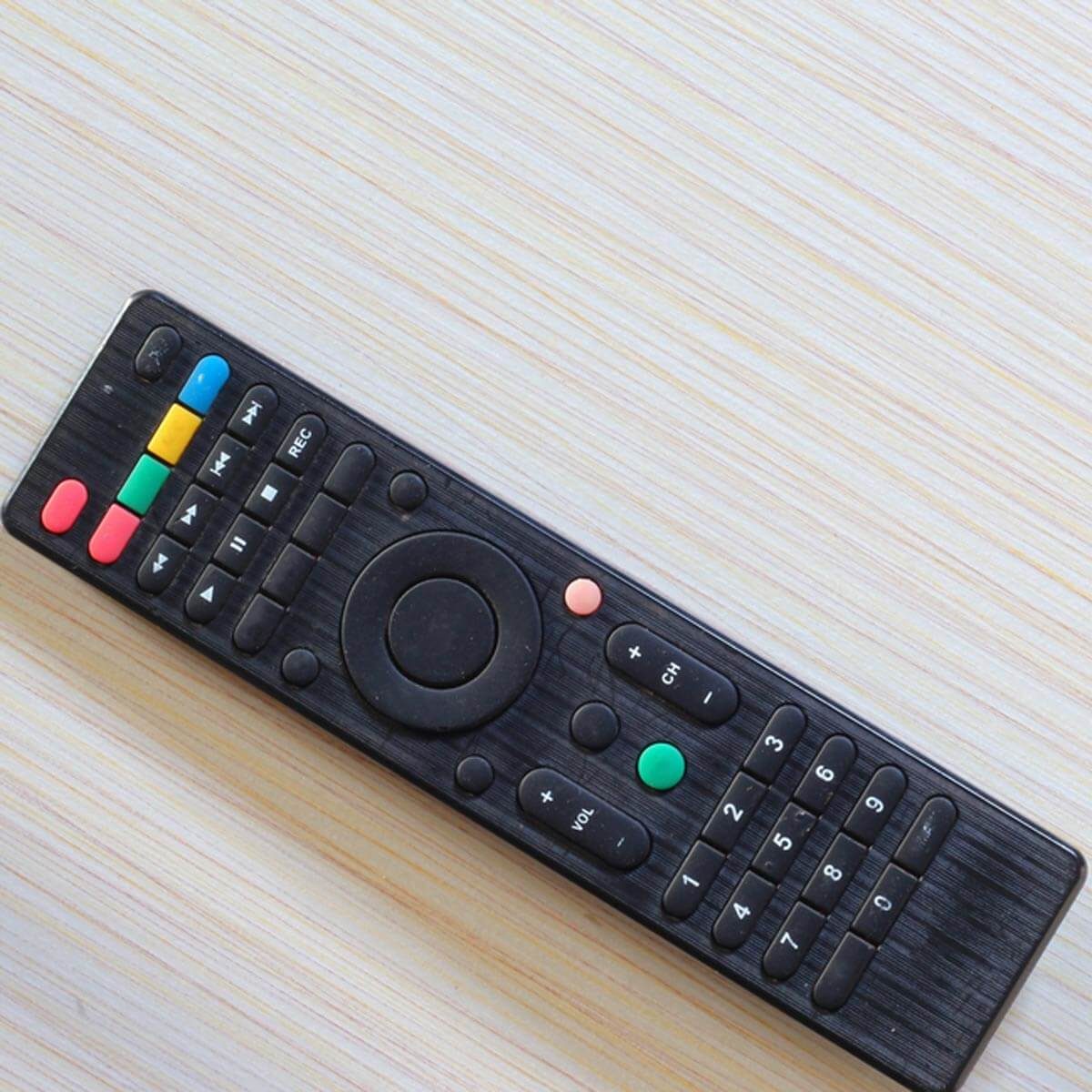
Wipe Off the Remote
Just like your phone, you touch the remote with dirty hands and spread those germs and dead skin cells around. So wipe it down once a week with a microfibre cloth and a little rubbing alcohol, or a disinfectant wipe.
These are the everyday items you don’t wash nearly enough.
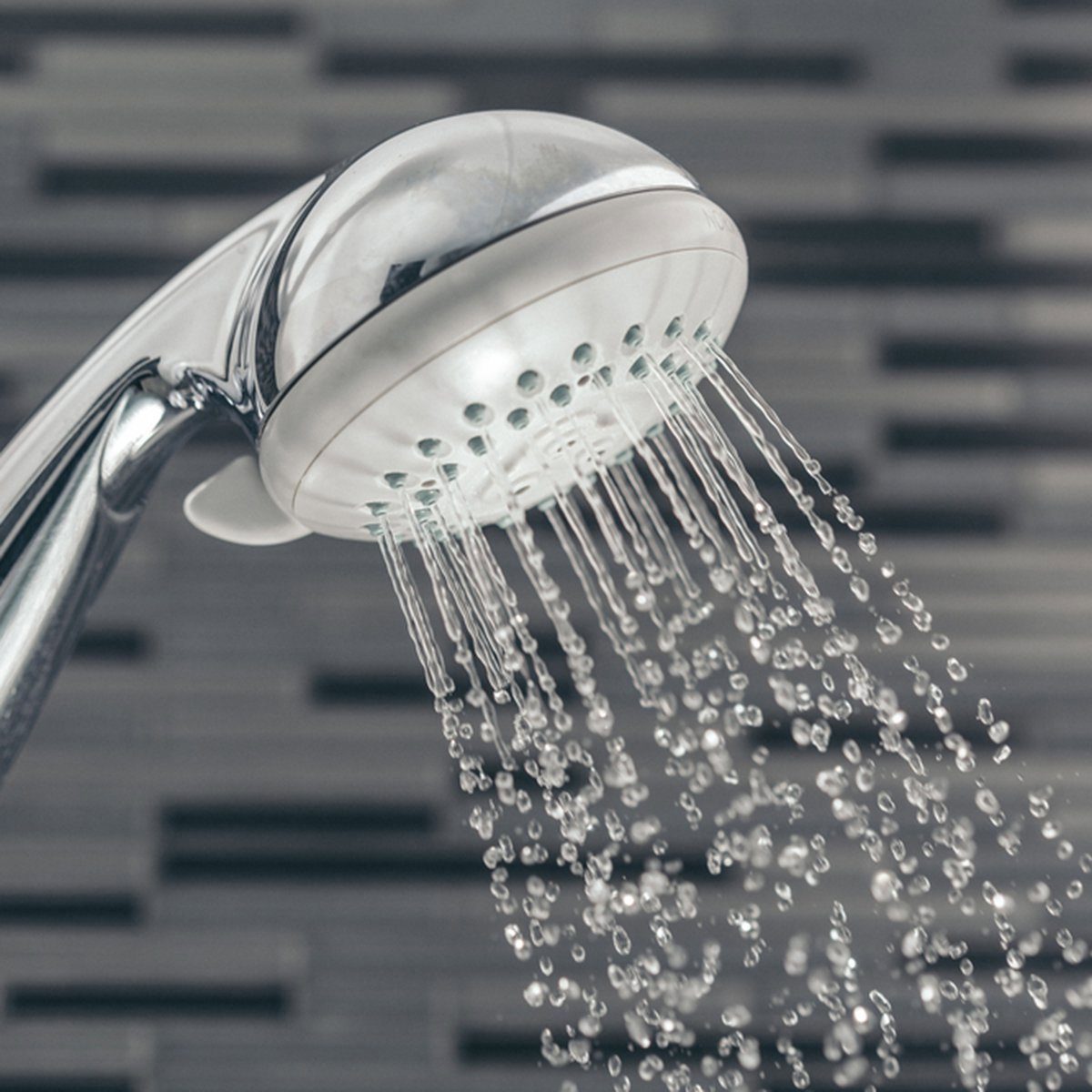
Shining Up the Shower Head
Your showerhead should get a wipe down every two weeks, and a deep cleaning twice a year or more depending on how much use it’s getting. Don’t fear, you won’t have to remove your shower head to clean it, you just need a few items you probably have around the house to give it a solid cleaning.
Check out these other bathroom cleaning tricks and tips.
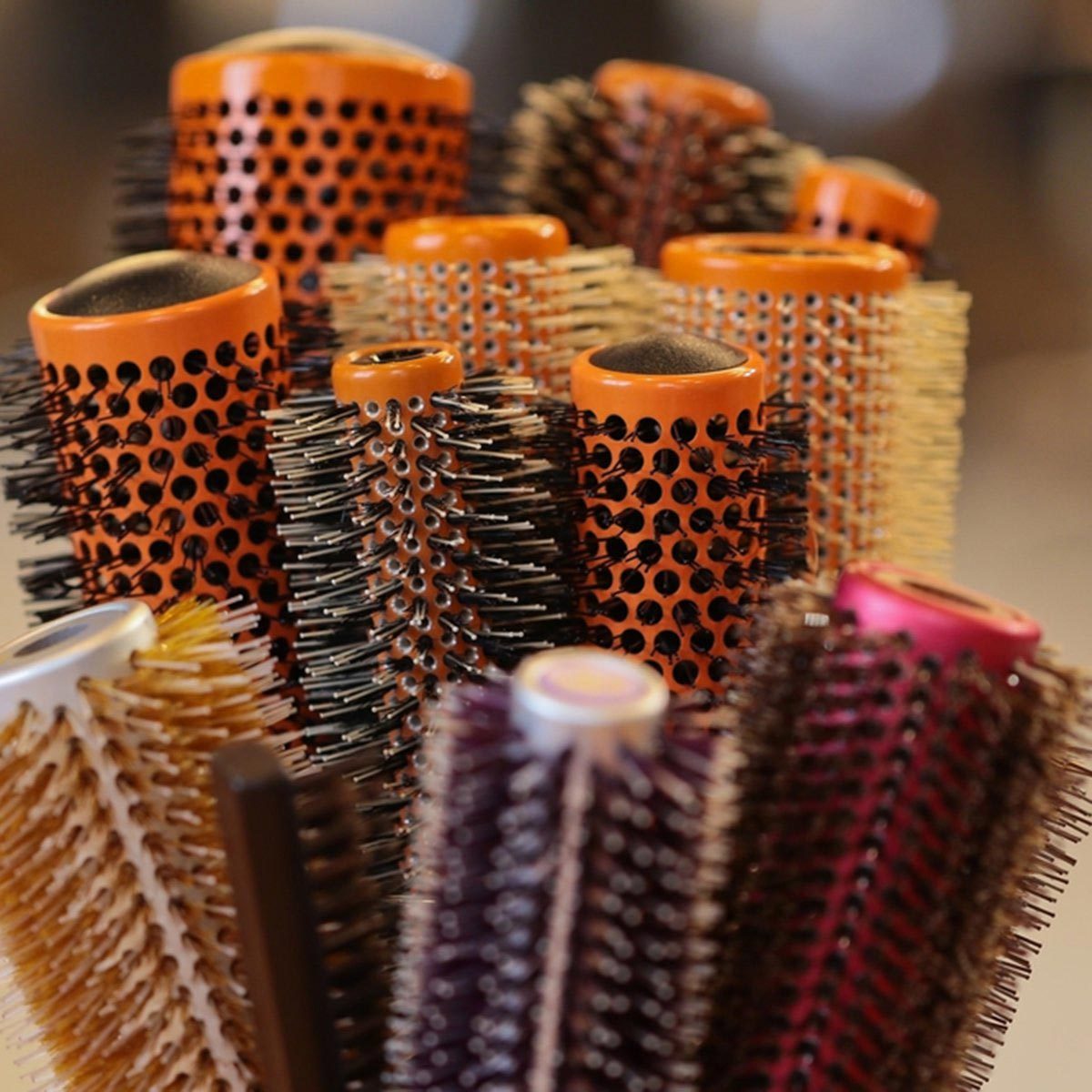
Rinsing Off Hairbrushes
Even if you pull the hair out of your hairbrushes and combs, they should still get a little rinse off every so often to get rid of any lingering debris and residue left behind from your hair products. Give them an overnight soak in warm water and baking soda (seriously, what can’t baking soda do?) to have them feeling brand new.
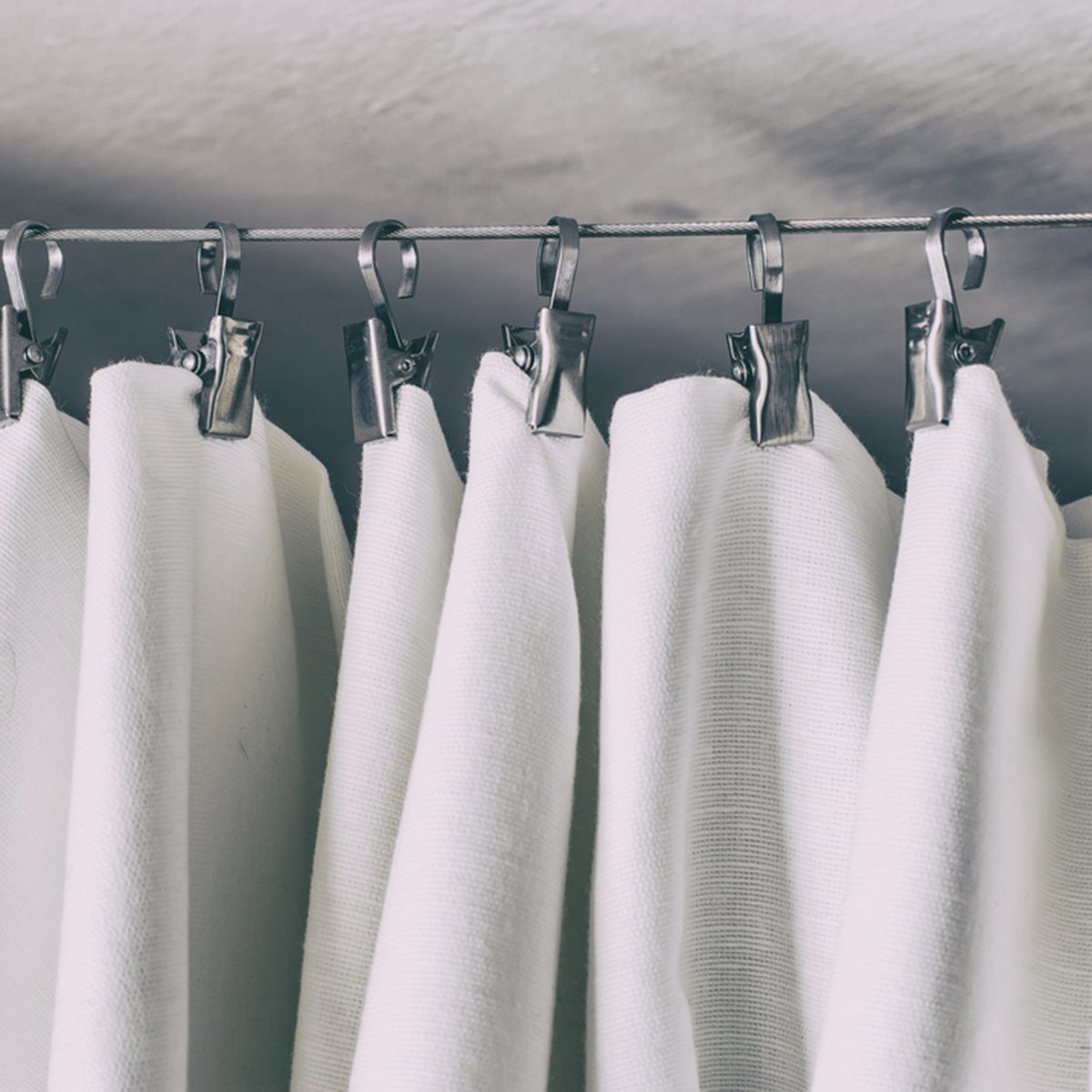
Wiping Down Shower Curtains
Your shower curtain attracts all kinds of yucky mildew and more from being in a moist environment like a steamy shower, so it’s best to give it a good wipe down with baking soda or a turn in the washer every once in a while.
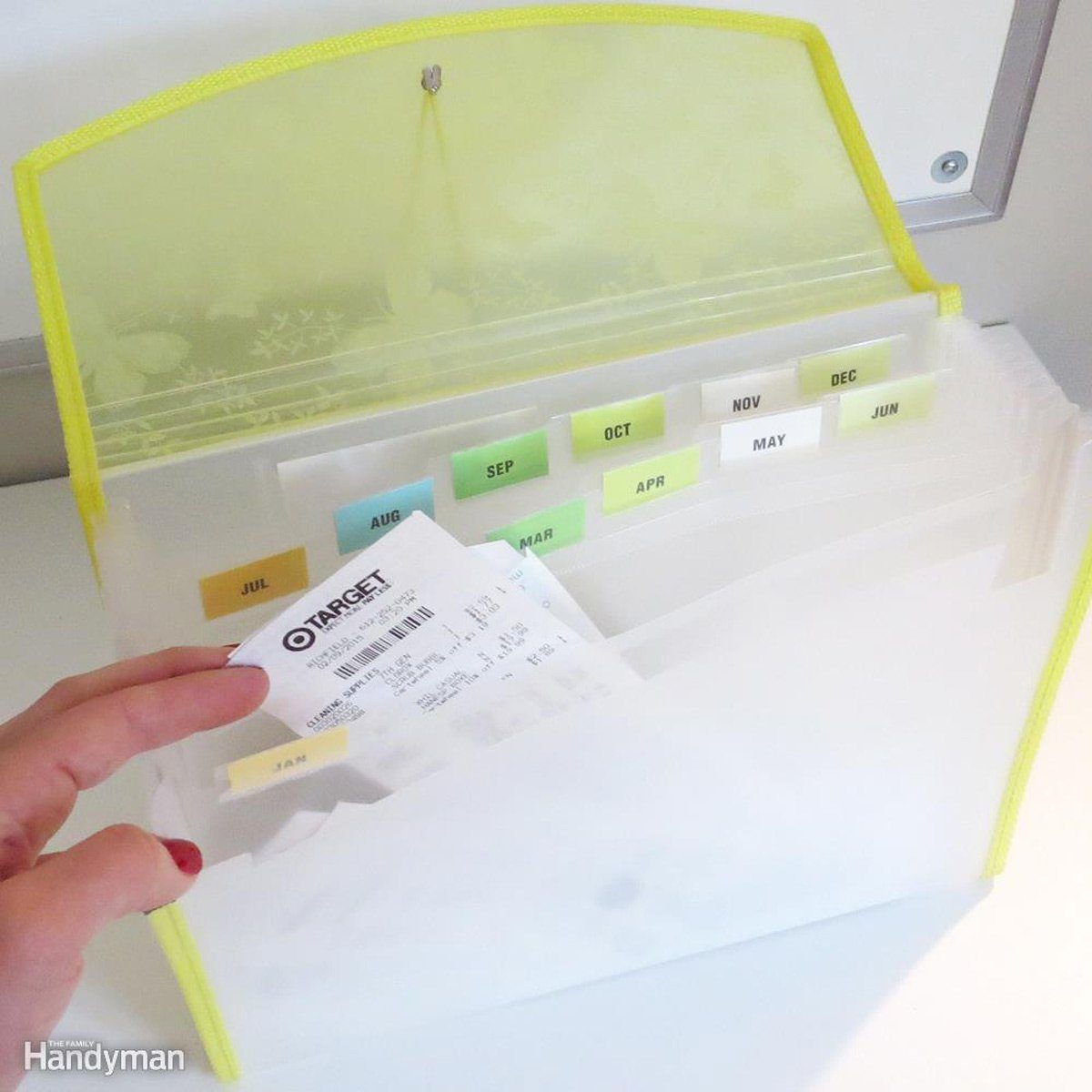
Starting a Homeowner’s Journal
Buy a ring binder and keep insurance papers, repair receipts and all other paperwork pertaining to the house in it. Storing all your house information in one handy place makes life easier for the homeowner and can be a sales ‘plus’ when selling the house later. —Debora Emmert
Learn how to declutter your home with you step-by-step guide.
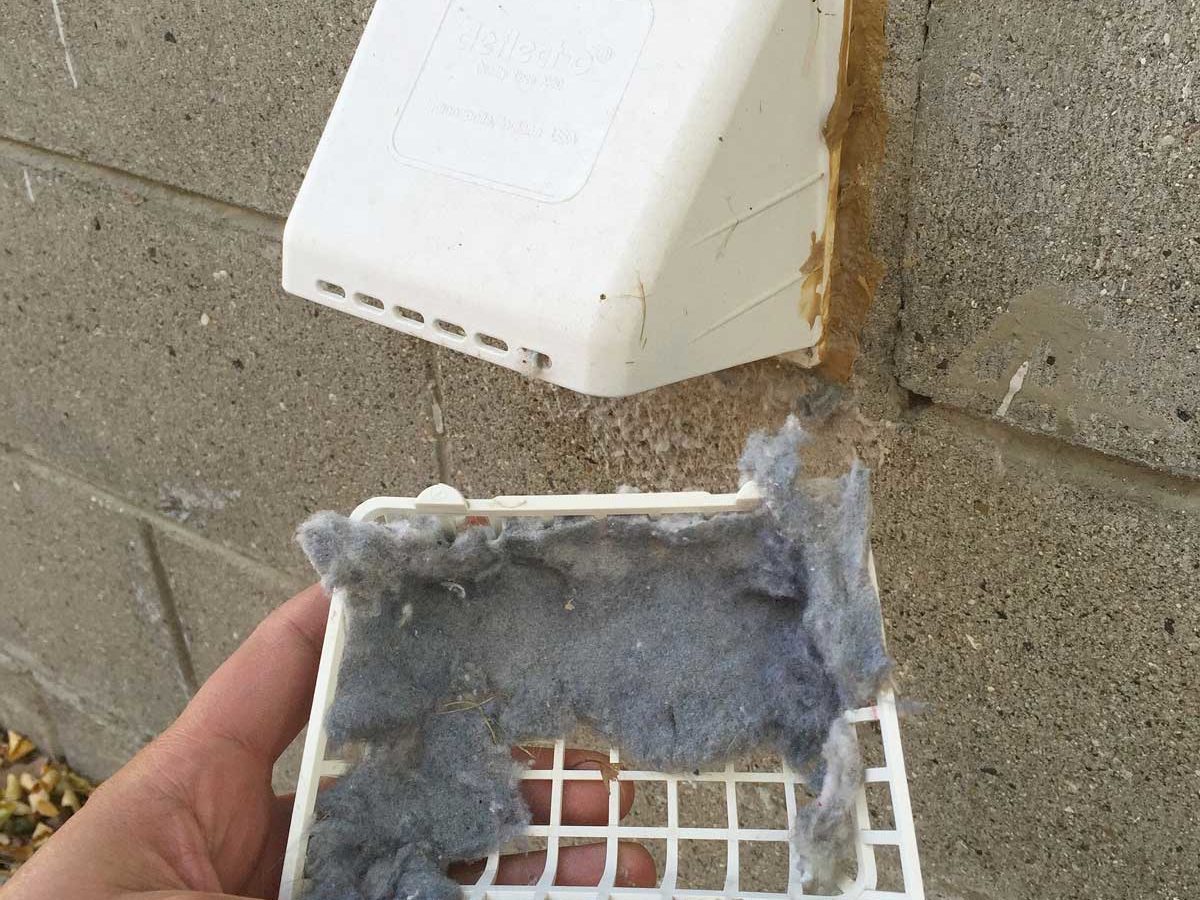
Clearing Out the Dryer Vent
A plugged dryer vent will cause your dryer to run inefficiently, and that’s bad. A plugged dryer vent could also cause a house fire, and that could be deadly! Dryers that are centrally located in houses are most prone to plugging because of the longer ducts. Excess lint is only one reason ducts get clogged; nesting pests and stuck exhaust hood flappers can also cause backups. Stronger odours and longer dry times are two signs your vent is plugged.
You’ll have to remove the vent from the back of the dryer to clean it. Suck debris from the ducts with a wet/dry vac, or ream them out with a cleaning kit that includes a brush on a long flexible rod that attaches to a power drill. The kits are available at home centers. If your ducts need replacing, get smooth metal ducts, which will stay cleaner longer than the rough corrugated surface of flexible ducts. Avoid plastic ducting altogether; it can be a fire hazard.
You’ll wish you knew these home improvement hacks sooner!
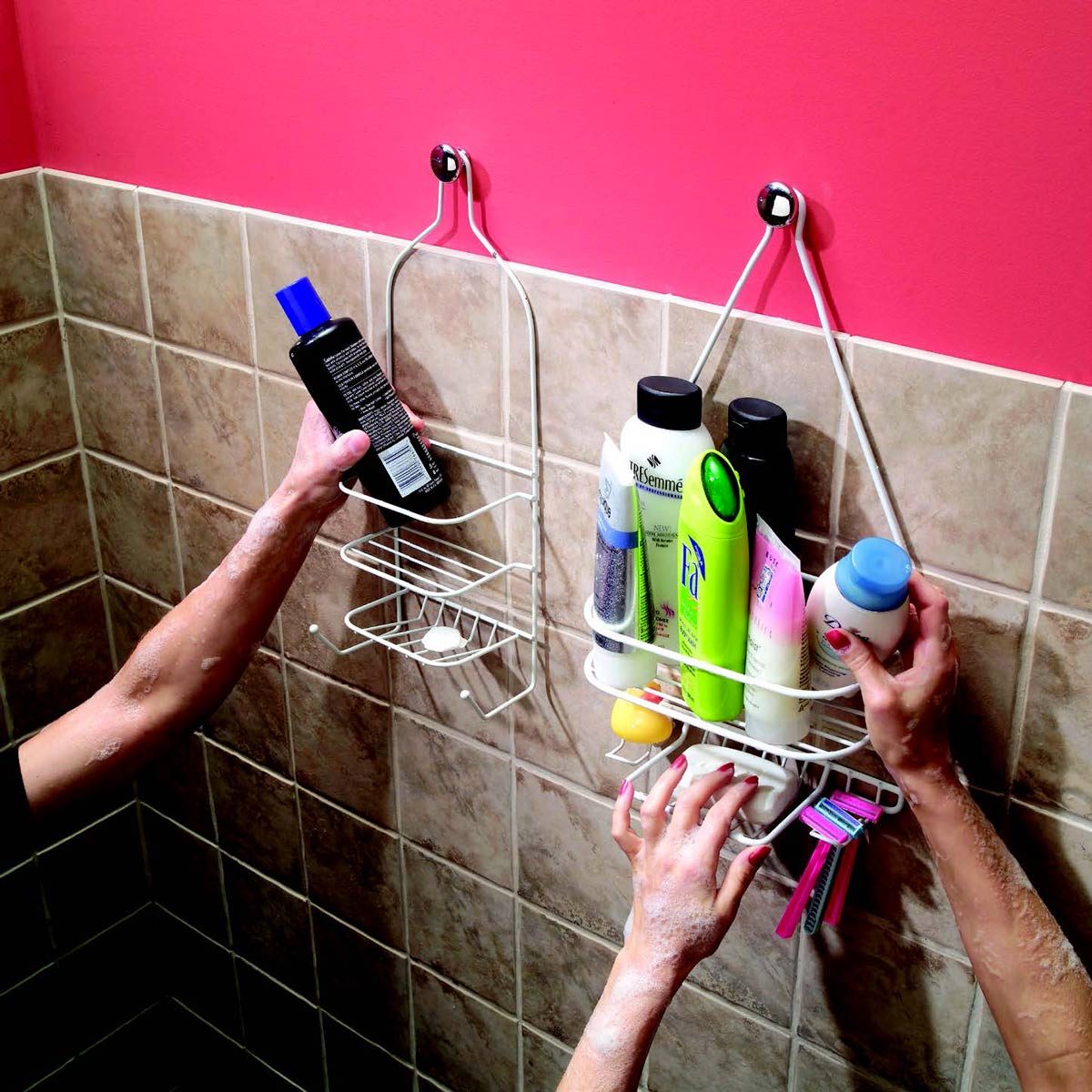
Adding More Shower Shelves
Those shelves that hang from a shower pipe are fine, but you have only one shower pipe. To hang more shelves, mount cabinet knobs on the wall using No. 8-32 hanger screws and screw-in drywall anchors.
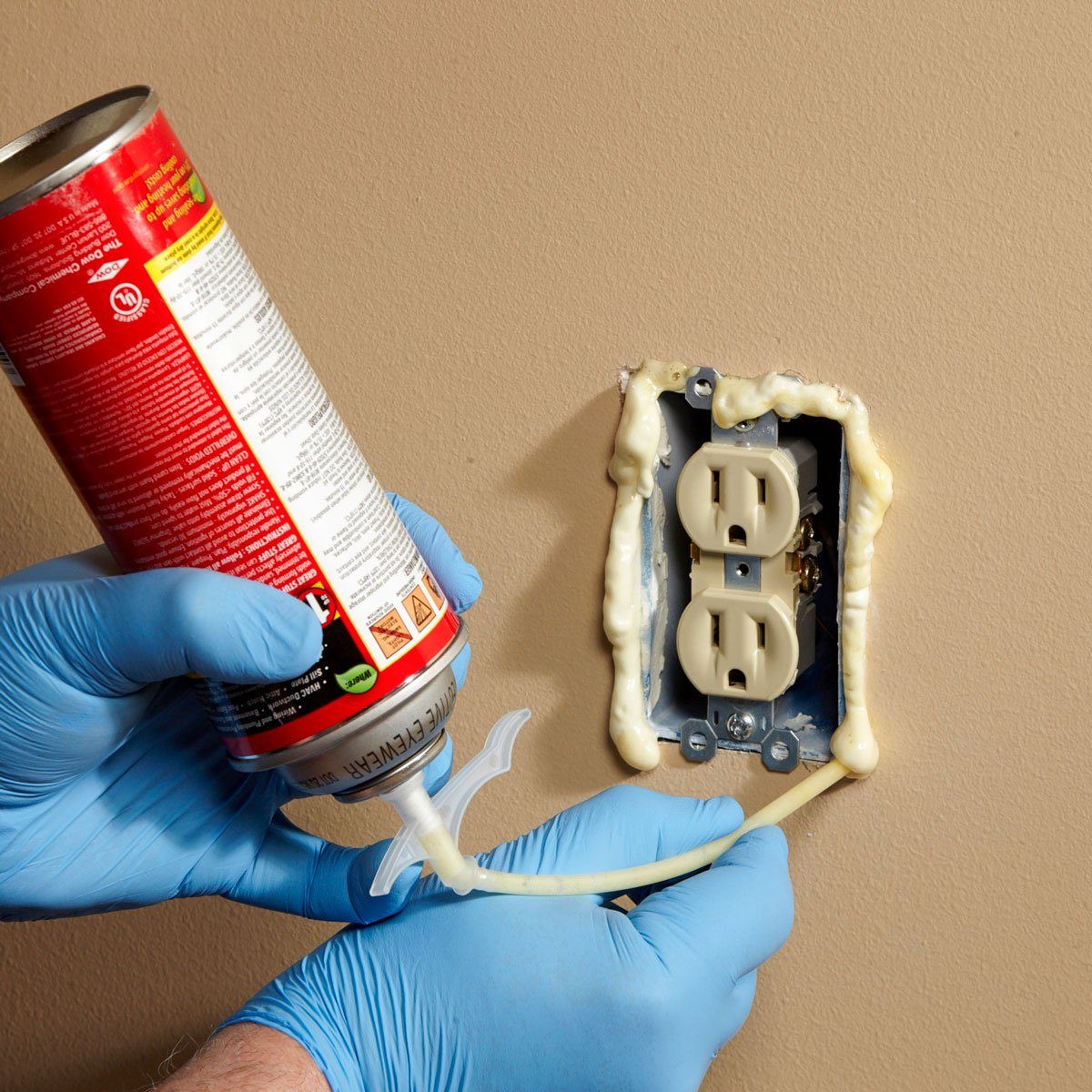
Sealing Outlets and Ceiling Boxes
The tiny gaps around outlets on exterior walls and ceiling boxes let cold air in (and warm air out). Sealing these areas takes just half a day and will help cut down on drafts (and your heating bill!).
Consider trying these cleaning tricks that actually work!
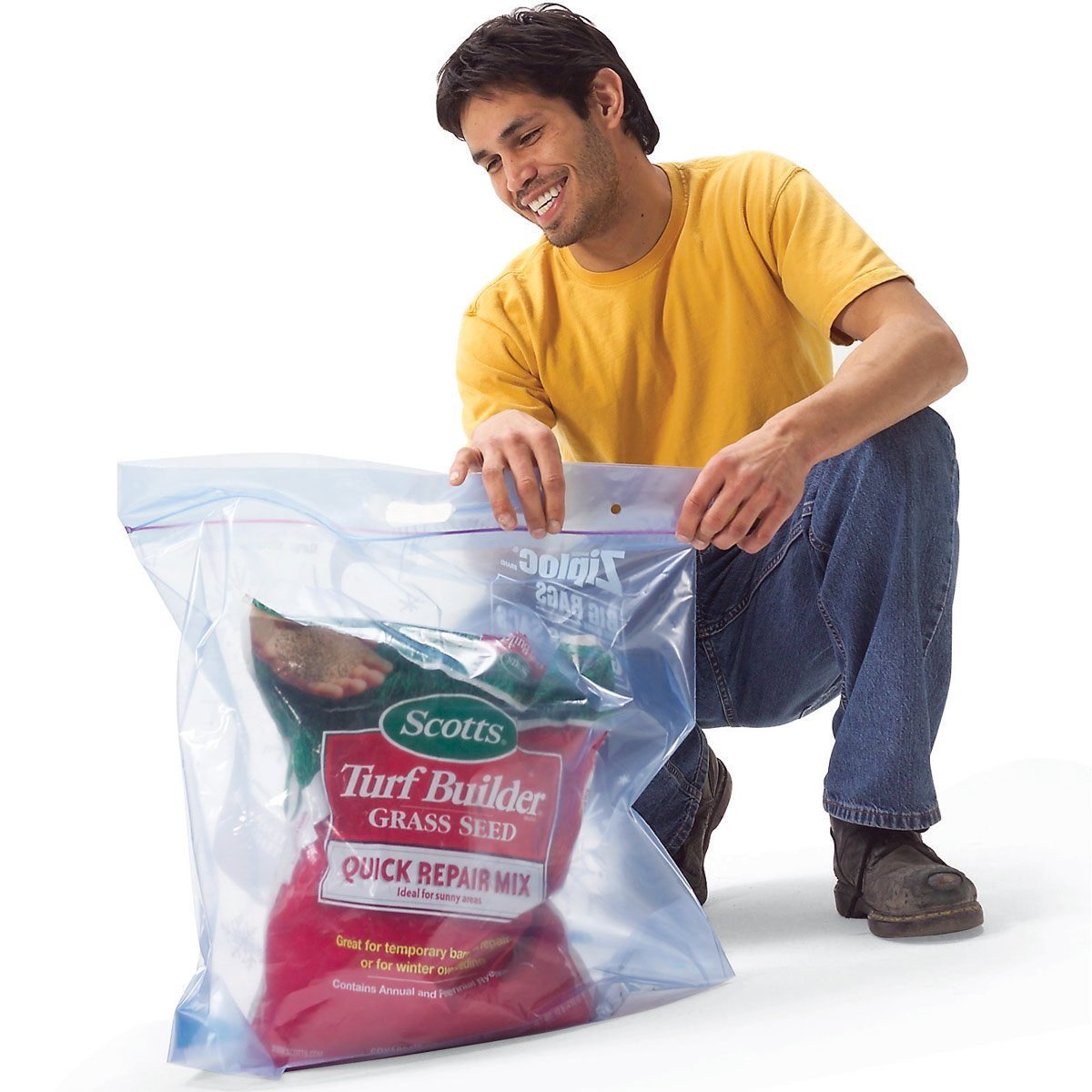
Preserving Lawn Supplies
Lawn products like seed and fertilizer soak up moisture in damp garages. To keep them fresh, store them in giant zip-top bags (available at discount stores).
Find out the most efficient way to mow the lawn.
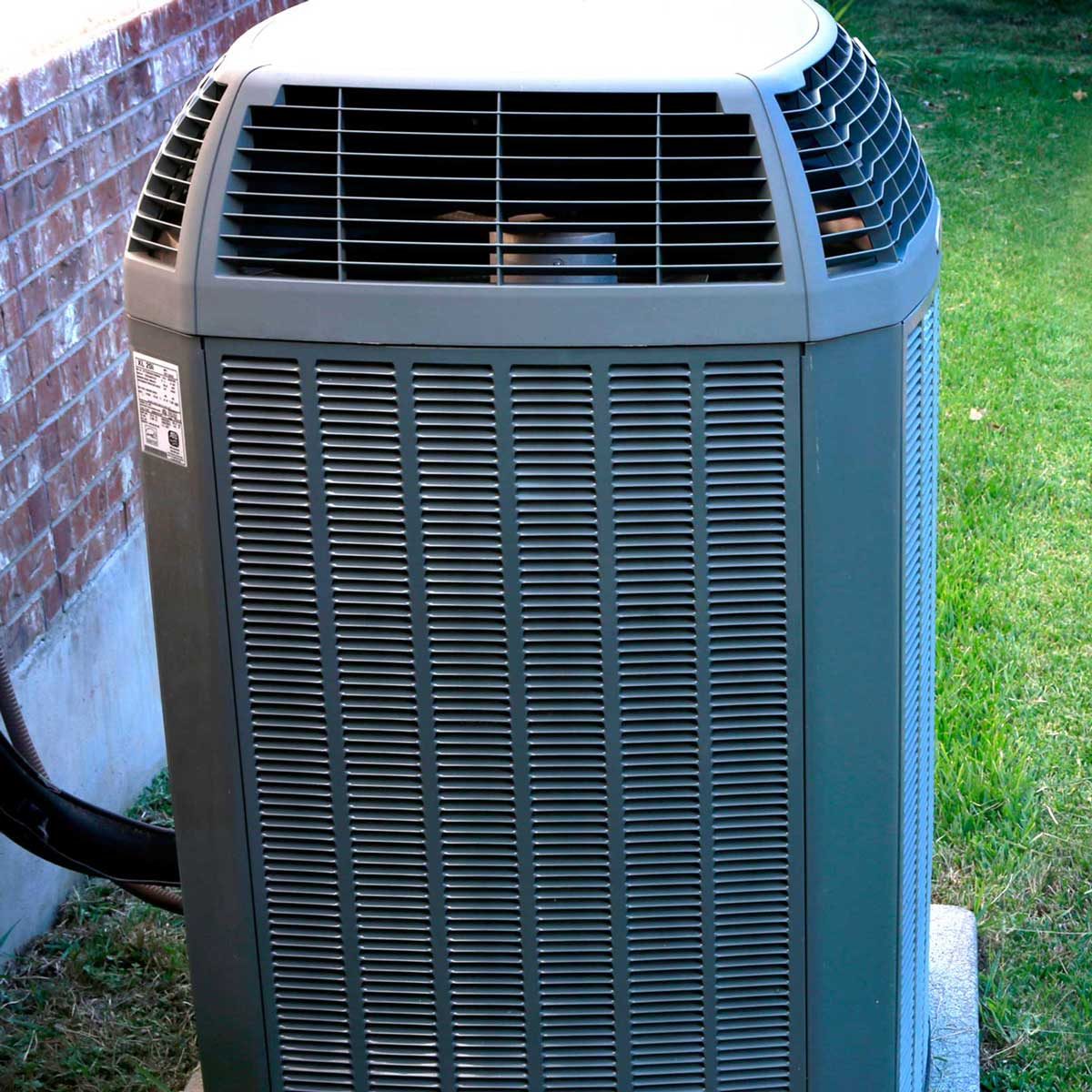
Checking HVAC Filters
You should replace your air filters at least four times a year, but it’s best to check them once a month. This keeps air in the house healthy and your system running efficiently because they are not clogged with debris or dust.
Follow these tips to keep your house cool without air conditioning.
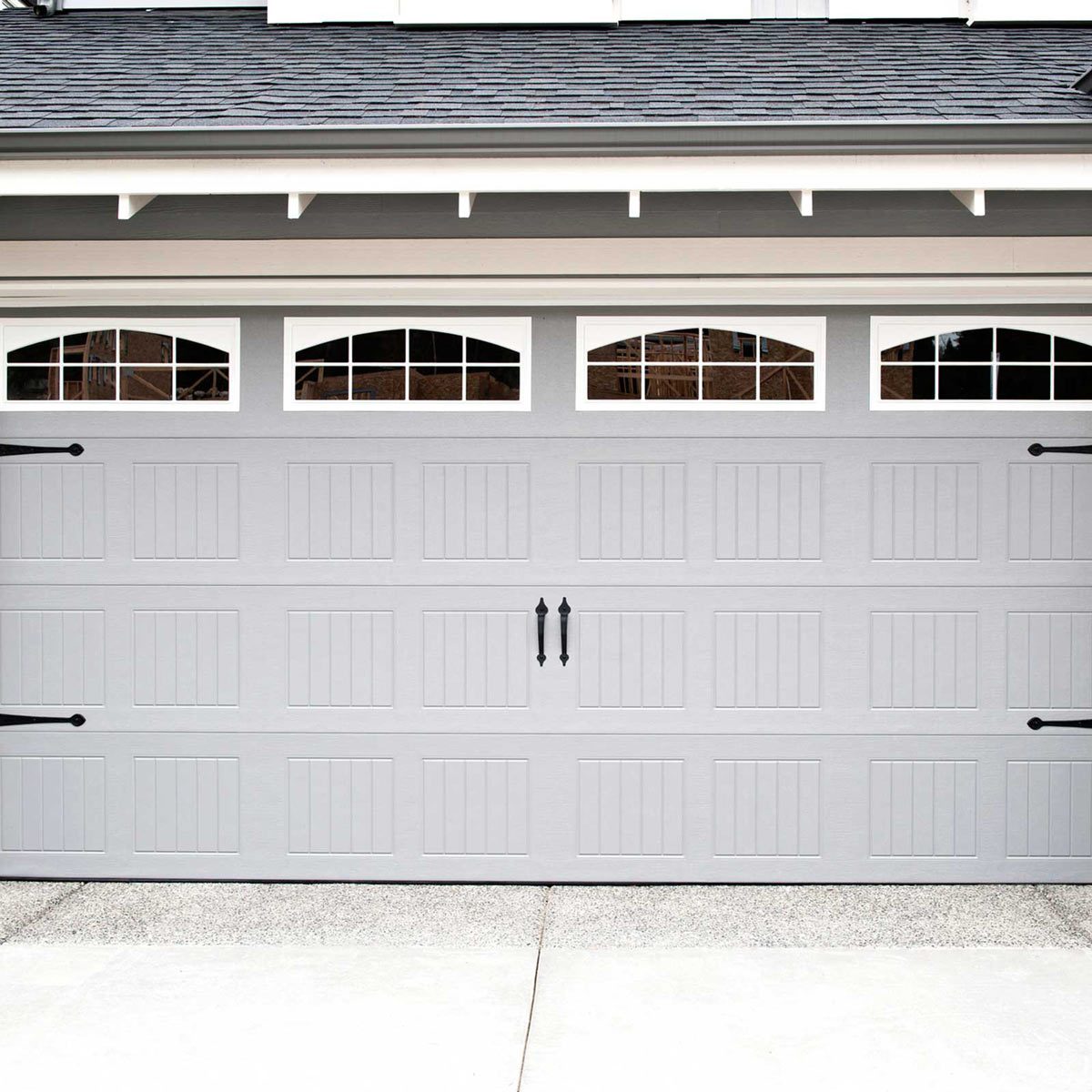
Inspecting the Automatic Garage Door Safety Shutoff
Test that the safety features of your automatic-opening garage door are still in good shape. That includes the safety beams, which should stop the door from closing if it detects anything the door’s path.
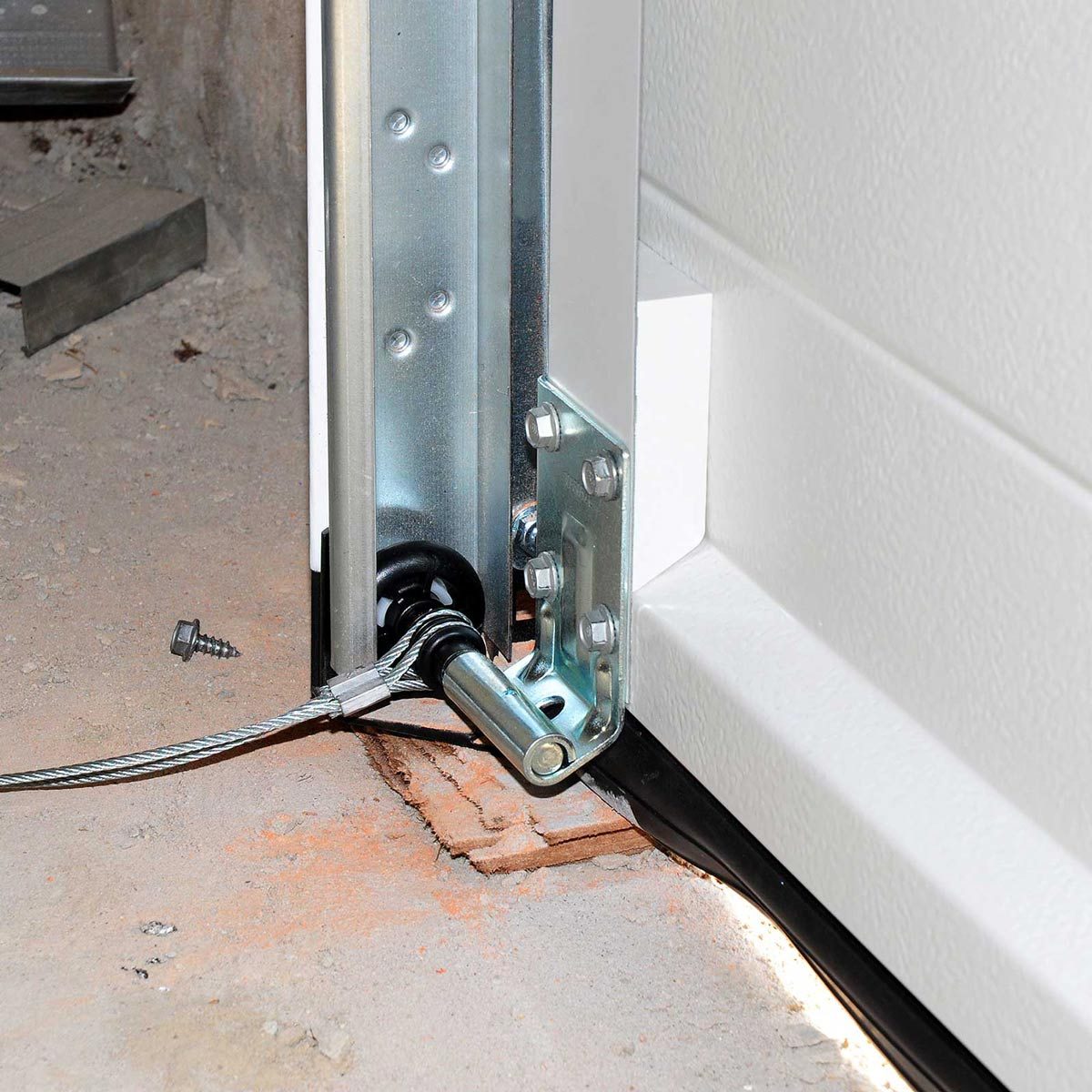
Lubricating Garage Doors
“Your doors are probably a series of panels that are connected with hinges and have either metal or plastic rollers on each side,”John Bodrozic, co-founder of HomeZada says. “Use an appropriate lubricant, depending on metal or plastic rollers, to keep your garage door operating smoothly and prolong its useful life.”
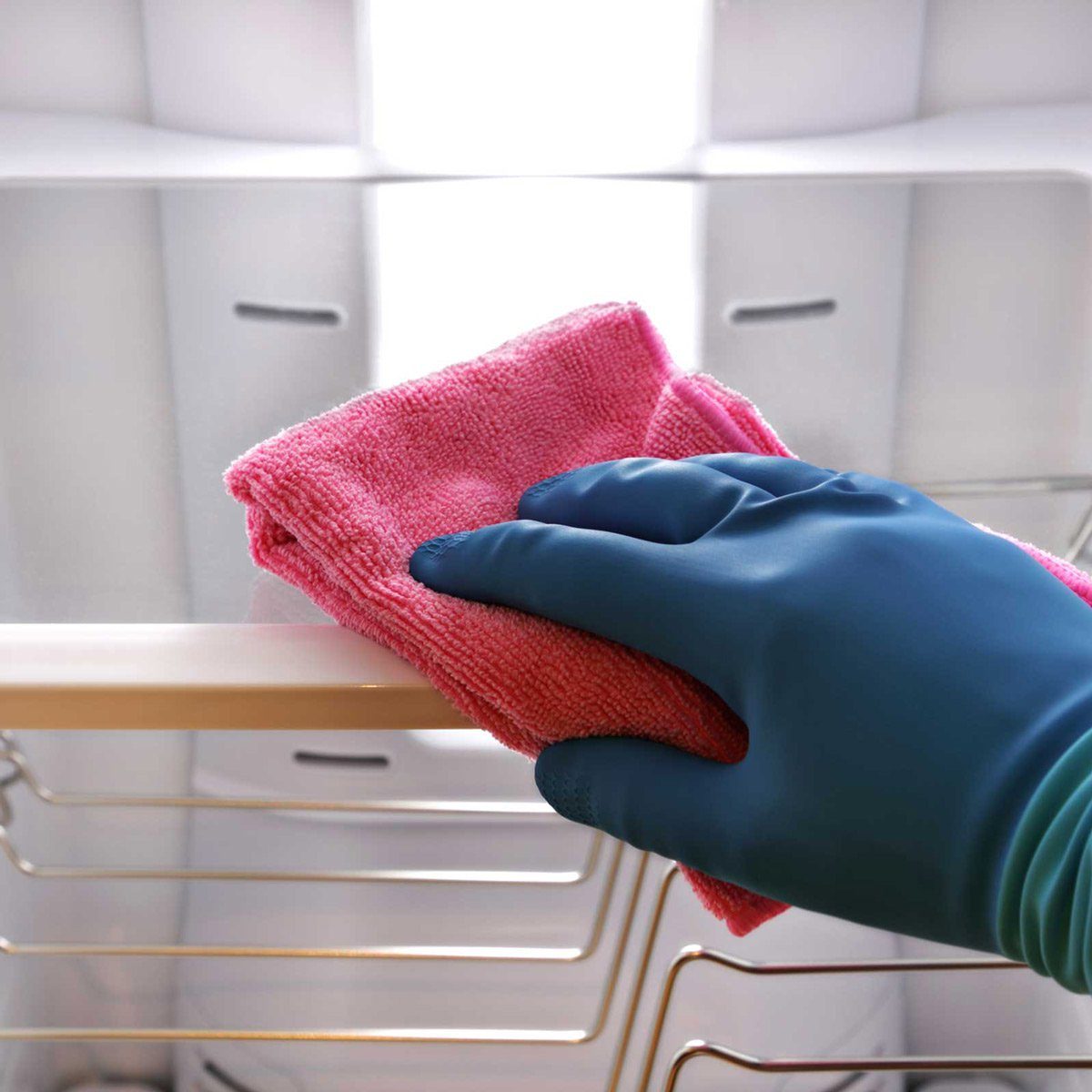
Cleaning Your Refrigerator Grille
“The top or bottom of your refrigerator has a grille that you can detach to get access to the compressor and cooling coils. This builds up dust over time and blocks air flow, which can burn out your refrigerator’s cooling system” says Bodrozic.
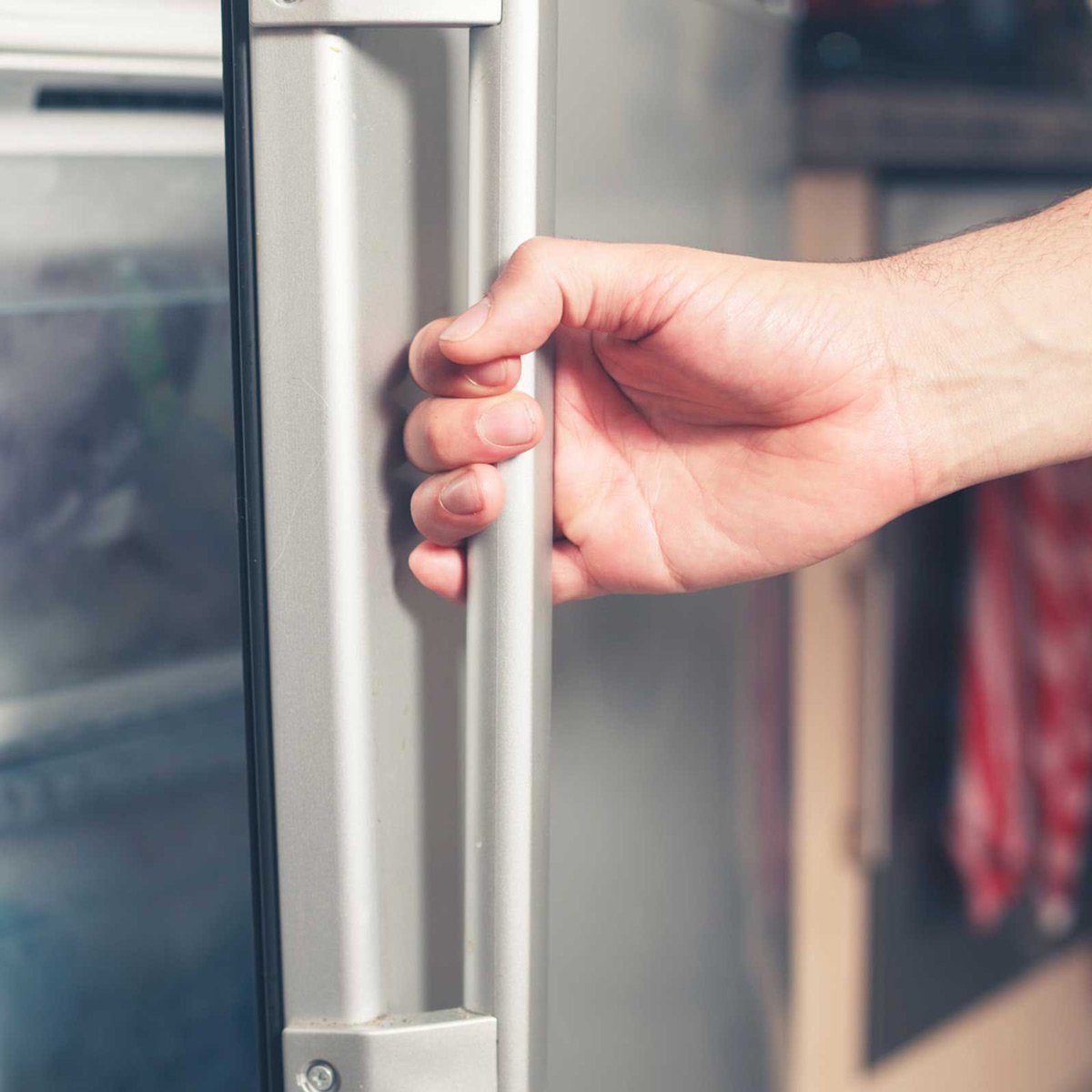
Organizing Your Refrigerator
“Whether you live in an apartment by yourself or you have a family of five, somehow food always piles up in the fridge,” says professional organizer Christina Giaquinto, owner of Christina Giaquinto Organizing LLC. At the beginning of every month, take out all the containers and perishable items and decide what is good to eat, and what needs to be thrown out,” she suggests. “If you have a little extra motivation, I suggest wiping the shelves down and doing a thorough clean after you finish de-cluttering.”
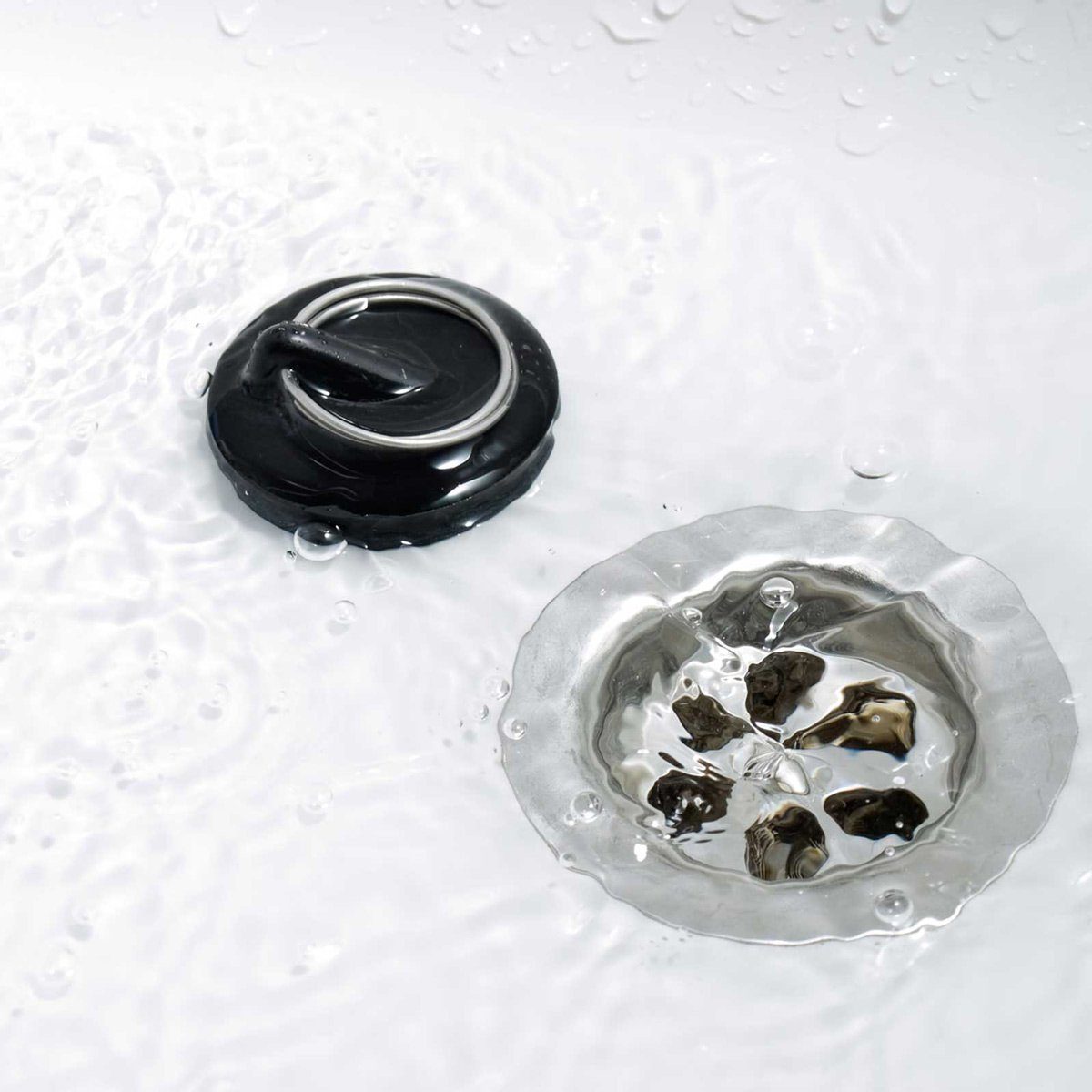
Inspecting Sinks and Tub Drains
“If you notice that your sinks or tubs aren’t draining as quickly, there may be a buildup causing a blockage,” says Kyle Gesuelli, home improvement expert at handy.com. “The first thing to do is try to remove anything that is obstructing the pipe manually using a pipe cleaner to pull debris through the plughole. Second, pour a cup of baking soda down the drain, followed by some hot water, which should clear things out.”
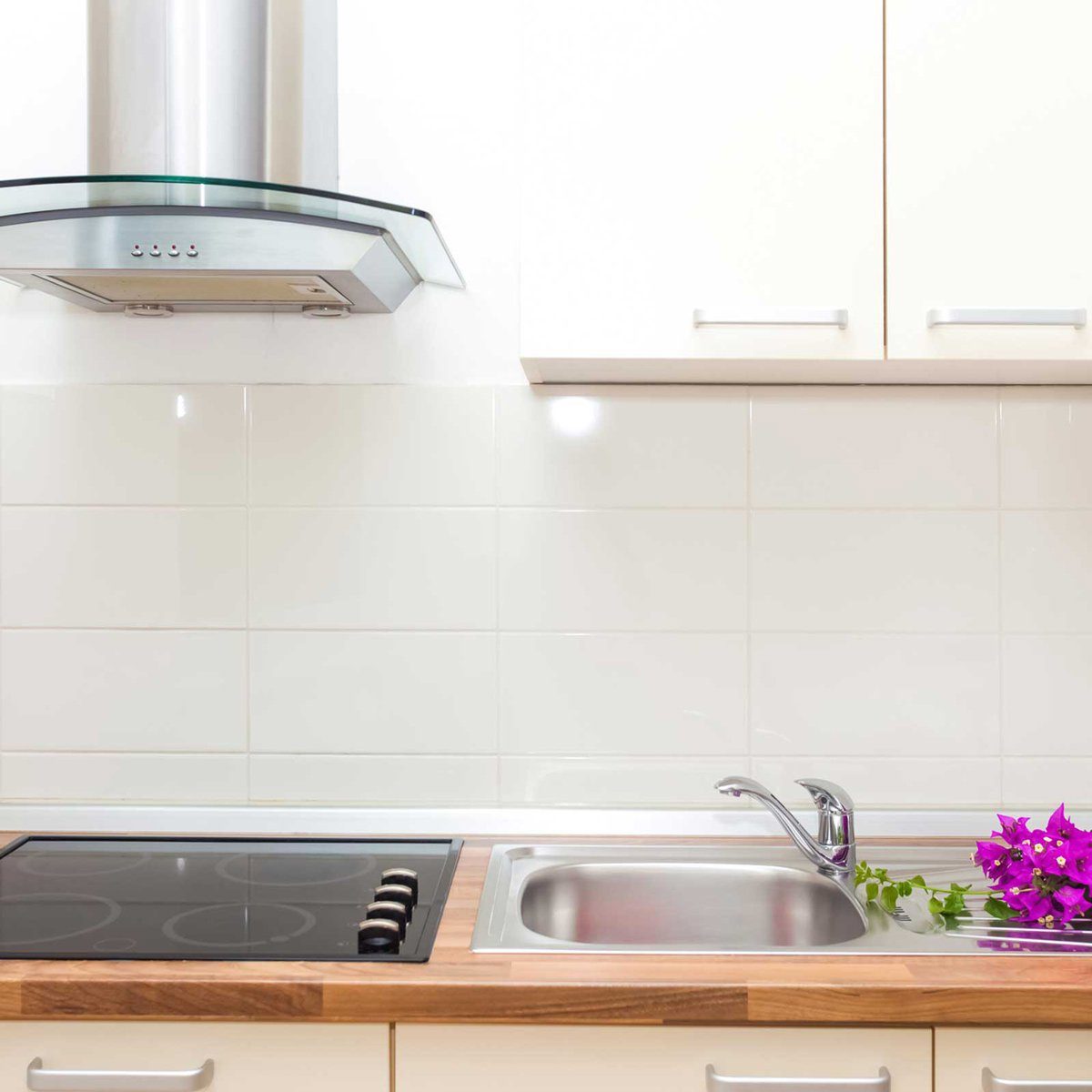
Cleaning Filters In Your Range Hood
“The purpose of the range hood filter is to collect grease, so over time it will become less effective as the grease builds up,” Gesuelli says. “To clean them, simply remove them and place them in a sink full of hot water, dishwashing liquid, and baking soda. Leave to soak for 10 to 15 minutes. If needed, scrub the remaining grease off with a brush, and then rinse clean. Dry the filters with a paper towel before replacing them.”
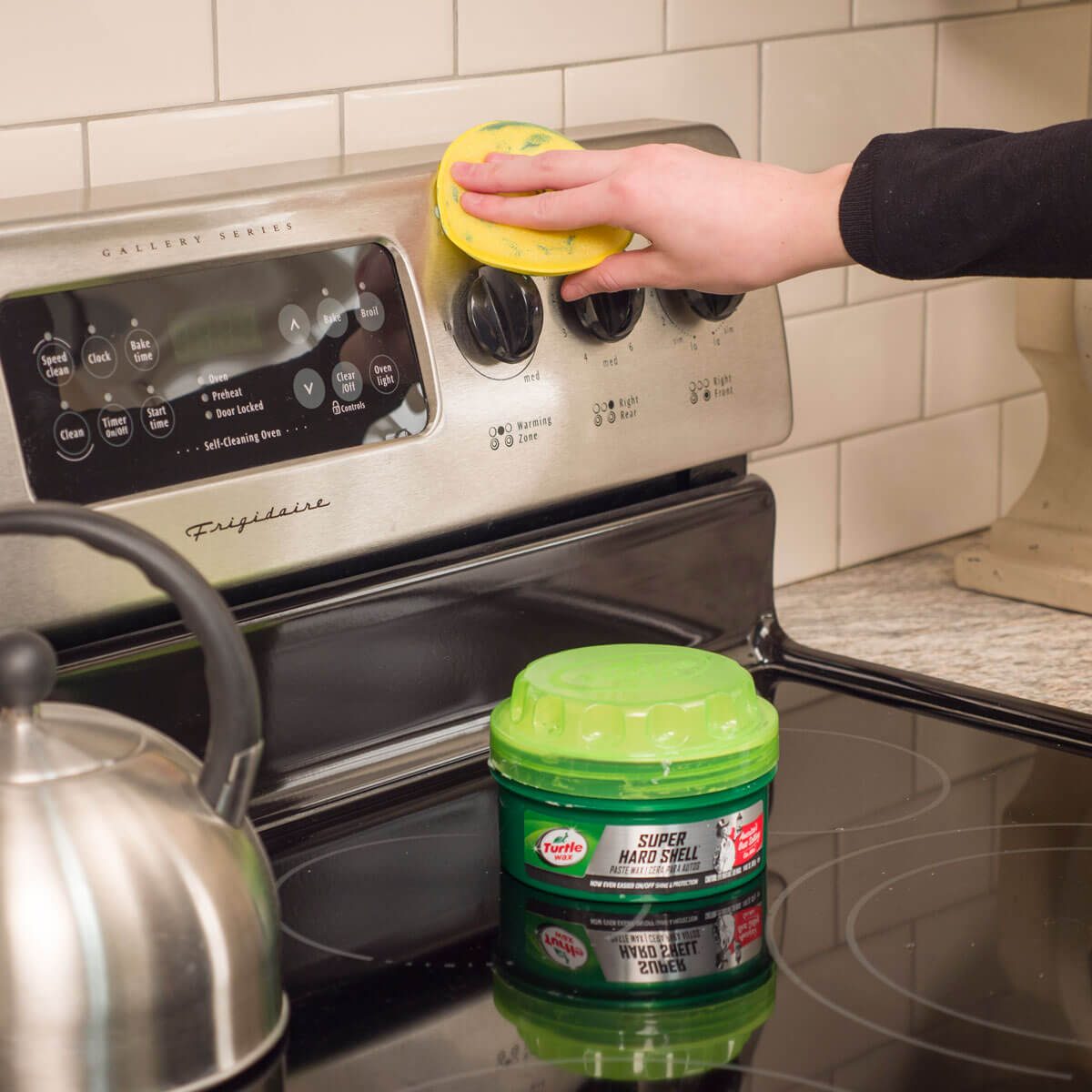
Making your appliances smudge-free
If you own stainless steel kitchen appliances, you may want to consider using car wax to clean them rather than a surface cleaner. Simply apply a light coat of car wax to the appliance, allow time to dry and buff clean to resist fingerprints and smudges. No more kiddy fingerprints on the fridge!
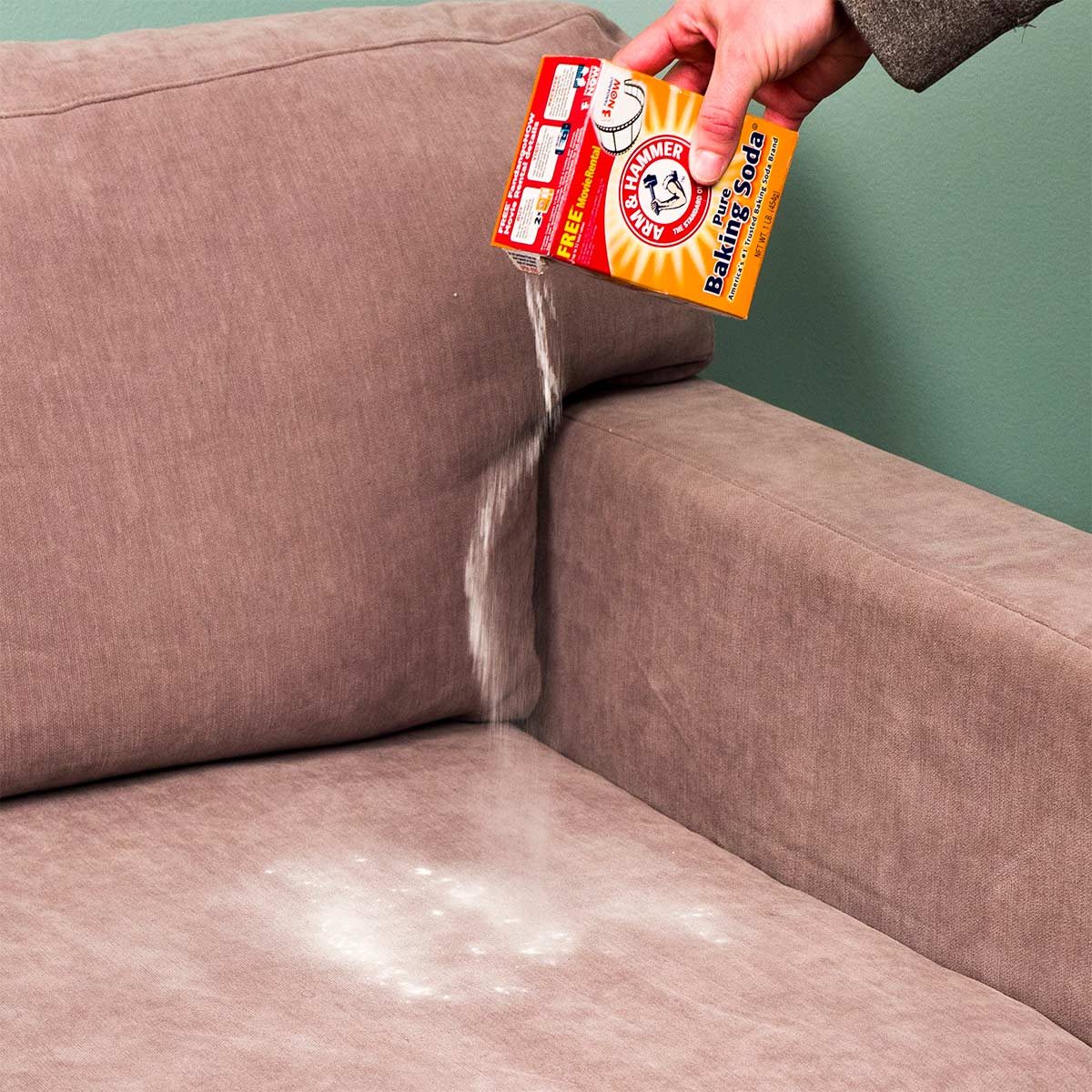
Cleaning Upholstery with Baking Soda
Use this handy hint if there’s a funky smell lurking in your couch or upholstered chair: Sprinkle a generous amount of regular baking soda onto the fabric and let it sit for at least 20 minutes. The baking soda will help to release odors and break up some light stains in the fabric.
After about 20 minutes, remove the baking soda—and the funky smell—with a handheld vacuum or a hose attachment for your large vacuum.
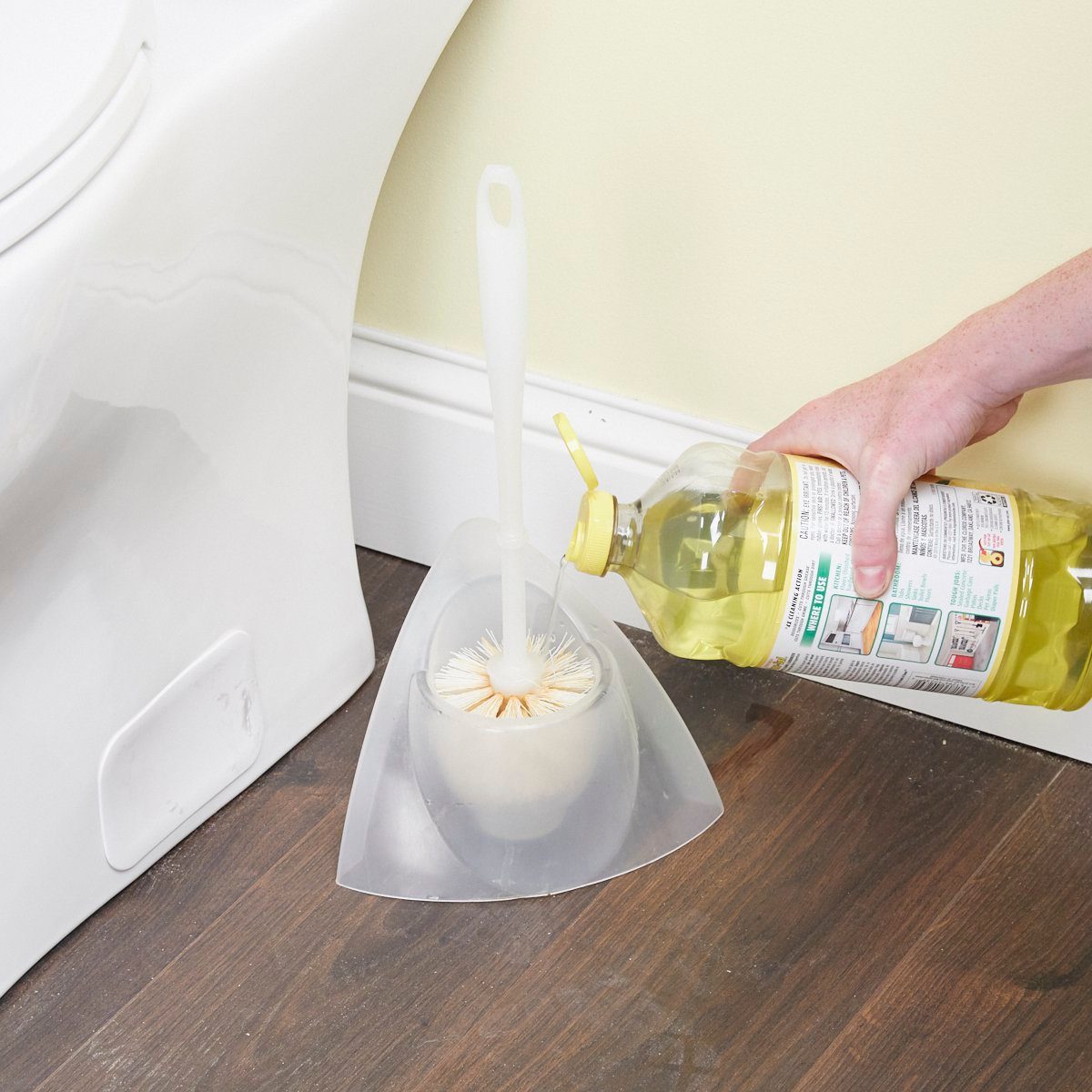
Keeping an Always-Fresh Toilet Brush
Toilet brushes are relegated to a filthy task, and the thought of what’s leftover on that brush can leave people a little queasy. So put a splash of Pine-Sol in the bottom of the brush container. Not only does this help to deodorize a bathroom, but it also disinfects the toilet brush.
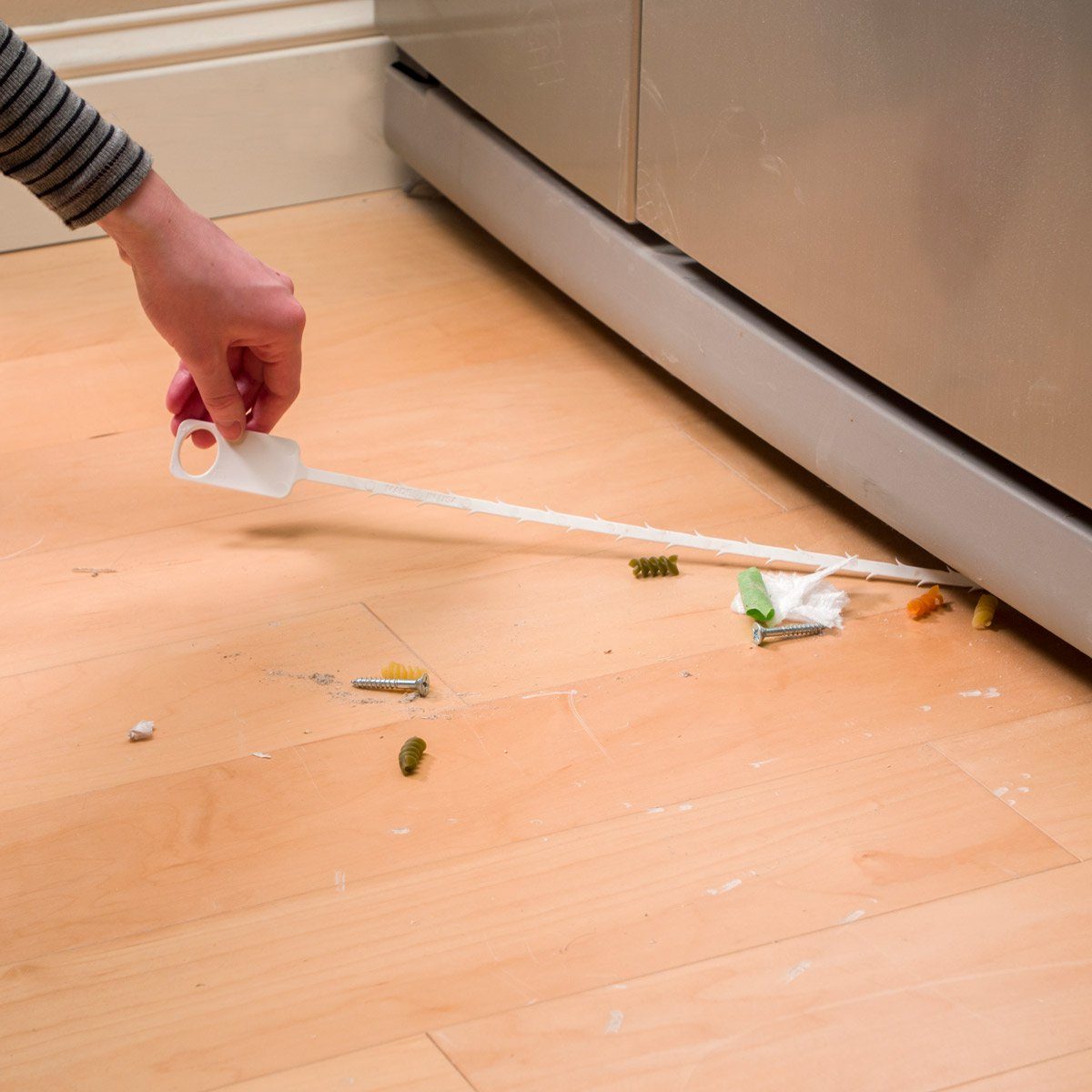
Cleaning Under Your Fridge
The space between your fridge and the floor is a magnet for pet hair, dust, food crumbs and other small trinkets. And if gone too long without cleaning, it can attract ants and other pests. To make this cleaning task less difficult, use a hair trap cleaner (also called a drain cleaning zip tool), which sells at home improvement stores for under $5. This hair trap won’t leave scratches on the floor and can reach further than a vacuum cleaner attachment. This tool will also help you when your bathroom sinks inevitably clog with hair.
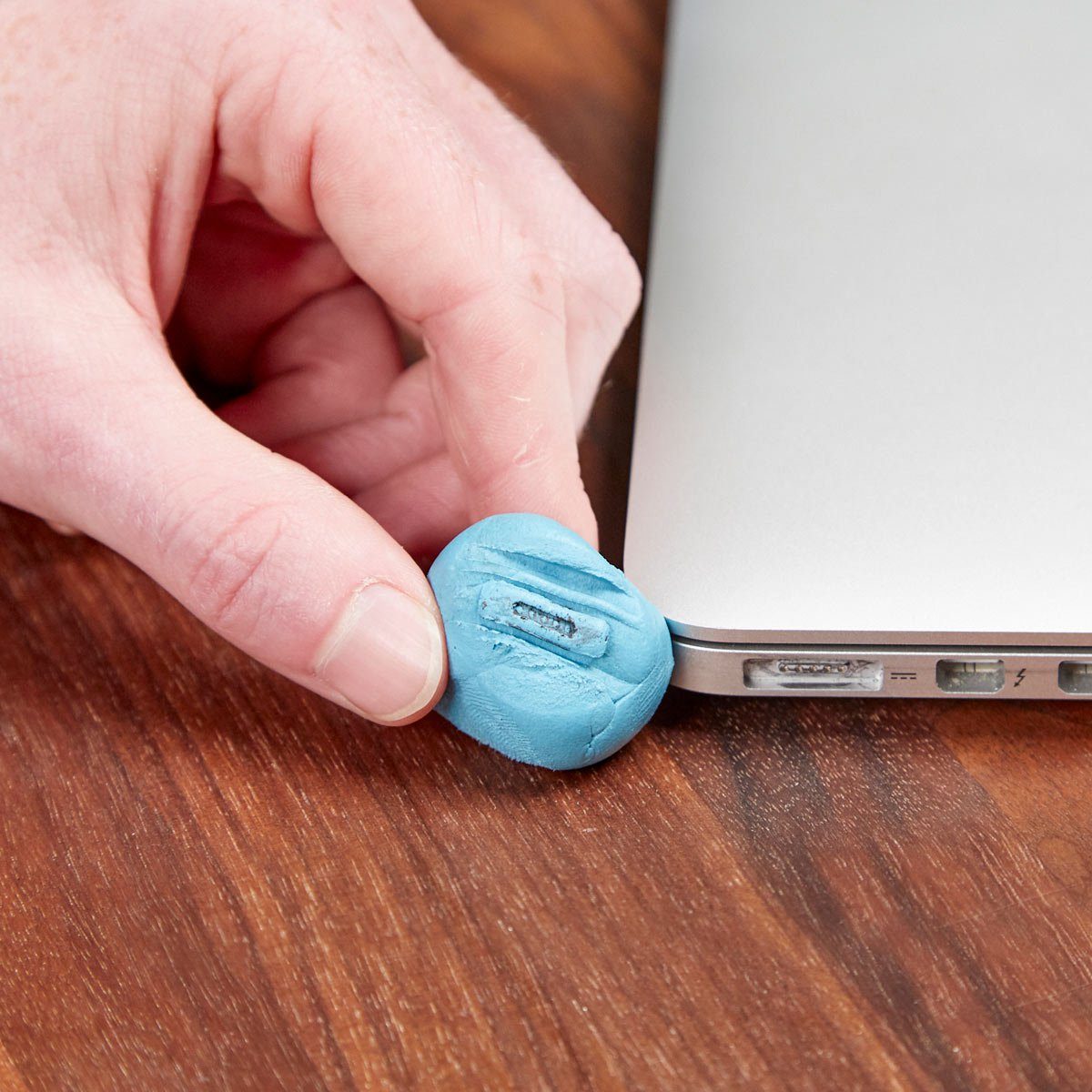
Cleaning Your Computer Ports
I use my computer a lot in my workshop. Once, the magnetic charging port collected a bunch of metal filings. I tried blowing them out with compressed air, but that didn’t work, as the filings were small and the magnet wouldn’t let go of them. What finally did the trick was sticking a bit of poster putty in the port. The putty doesn’t clog the port and successfully removes anything that might interfere with the connection. — Travis Larson
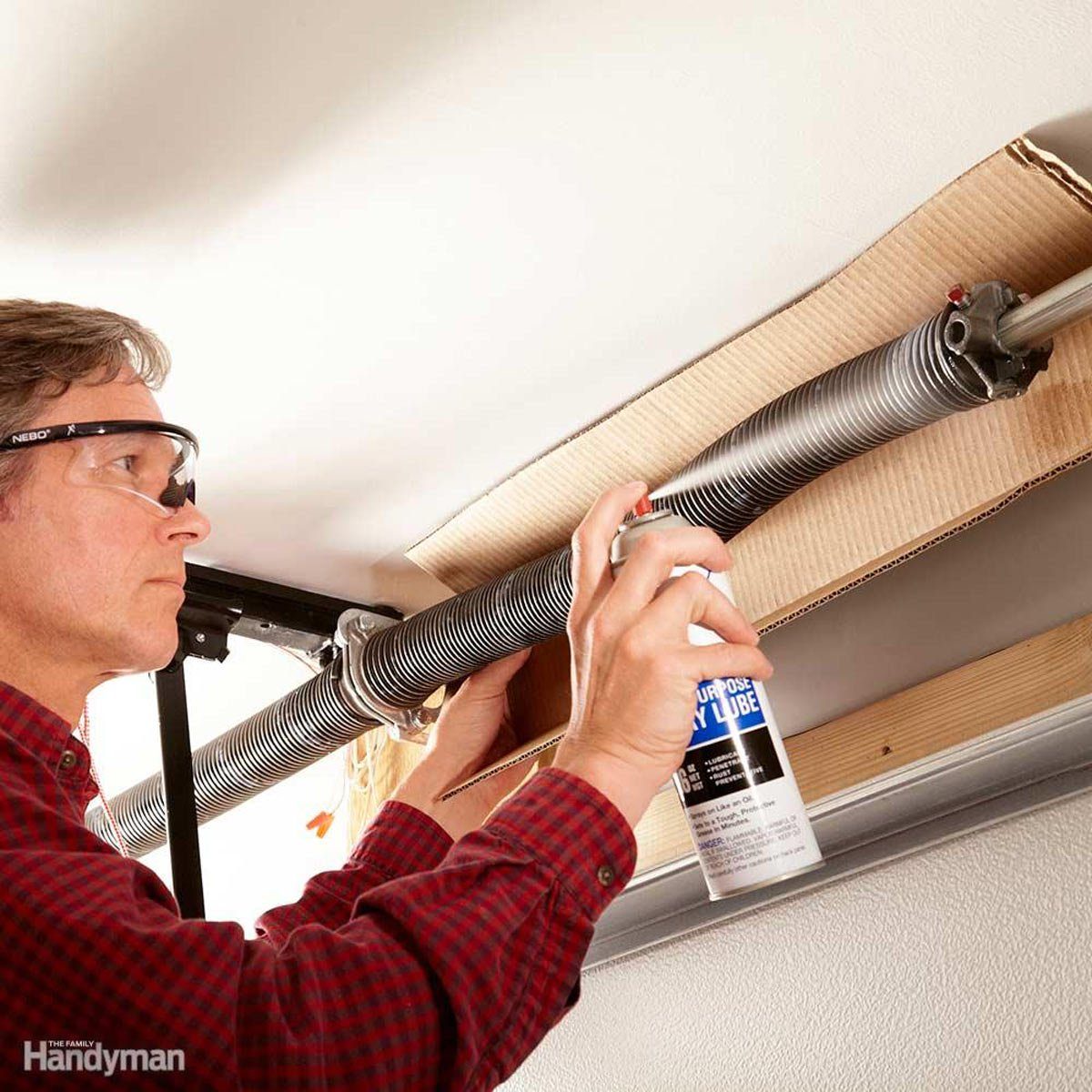
Looking at Garage Door Springs
Coat the overhead torsion springs mounted above roller tracks with a garage door lubricant. All springs will eventually break because of metal fatigue and/or corrosion, but lubing them at least once a year will make them last longer. Spraying can be messy; it’s smart to protect the wall behind the spring with a piece of cardboard. Garage door lubricant is available at home centers. Lube the rollers, hinges and track while you’re at it.
Find out which home renovations you’re most likely to regret later.
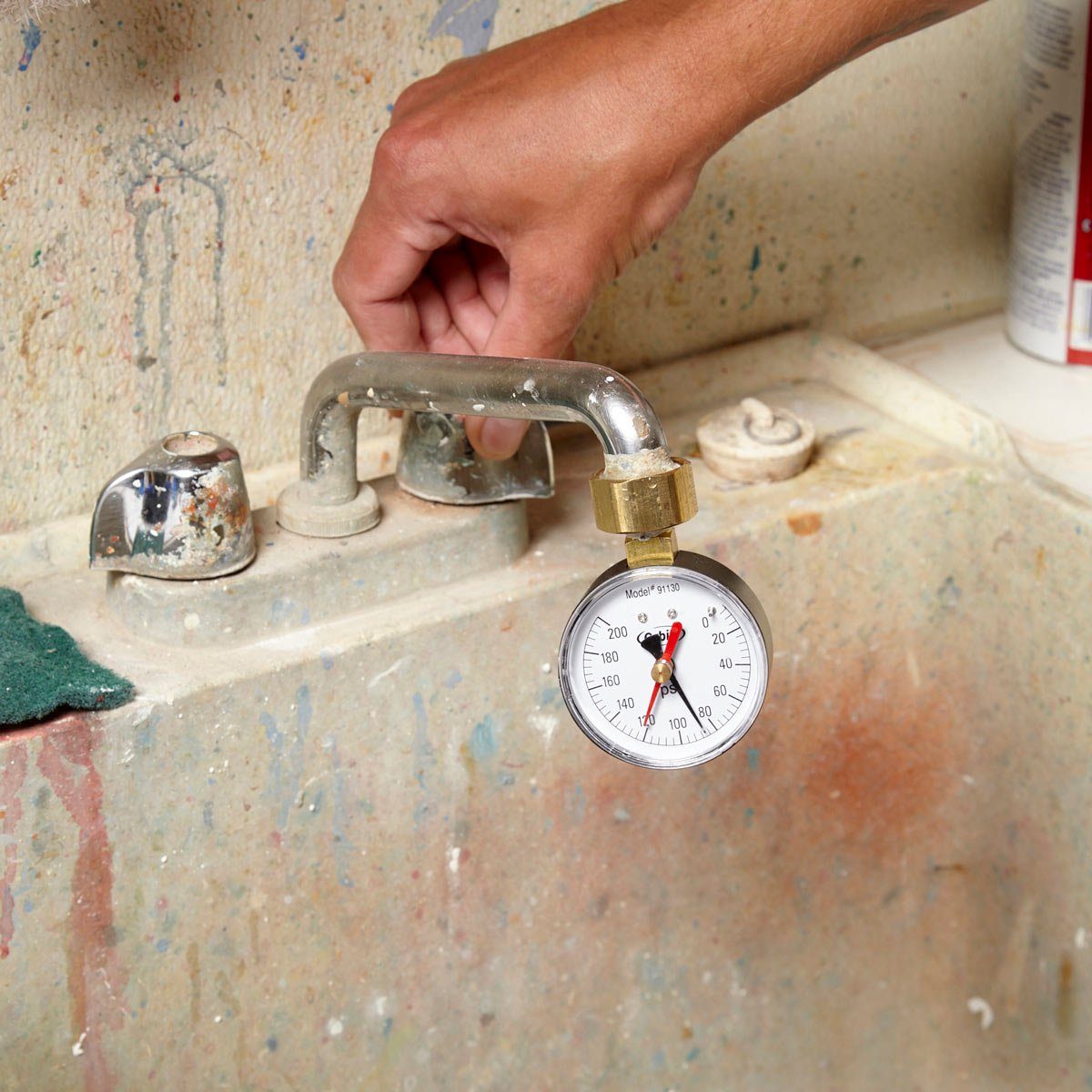
Checking for High Water Pressure
A technician was assisting a water softener installer who was replacing a fairly new softener because the first one had ruptured and filled the pipes with little zeolite beads.
The installer didn’t seem too worried about why the first one failed, but the assistant did a little investigating. A water pressure test gave a reading of more than 110 lbs. psi. The culprit was the 20-year-old pressure-reducing valve. After a new valve was installed, the pressure went down to about 75 lbs. Pressure-reducing valves are usually found near the main water shutoff valve, but not all homes have them. It depends on your municipality.
High water pressure can harm pipes, connections, and appliances. It also creates water hammer and waste massive amounts of water. Checking for high water pressure is an often overlooked maintenance item, and one that’s easy enough to perform. A new pressure-reducing valve and a simple pressure gauge like this one that hooks up to a spigot or laundry tub faucet are both available at home centres.
Discover how often you need to replace everything in your home.

Checking for Mice Nests in Engine Compartments
Mice love to winter in enclosed places like engine compartments, window A/C units and lawn tractor nooks and crannies. If a vehicle or piece of equipment has been sitting unused for a while, check for mice nests before you start it up. The last thing you want to do is take out your boat and discover that you have little furry stowaways that have chewed through half the wires. Mice nests can also cause electronics to overheat and can get sucked into and clog carburetors.
Check out the best ways to get rid of disgusting house bugs.
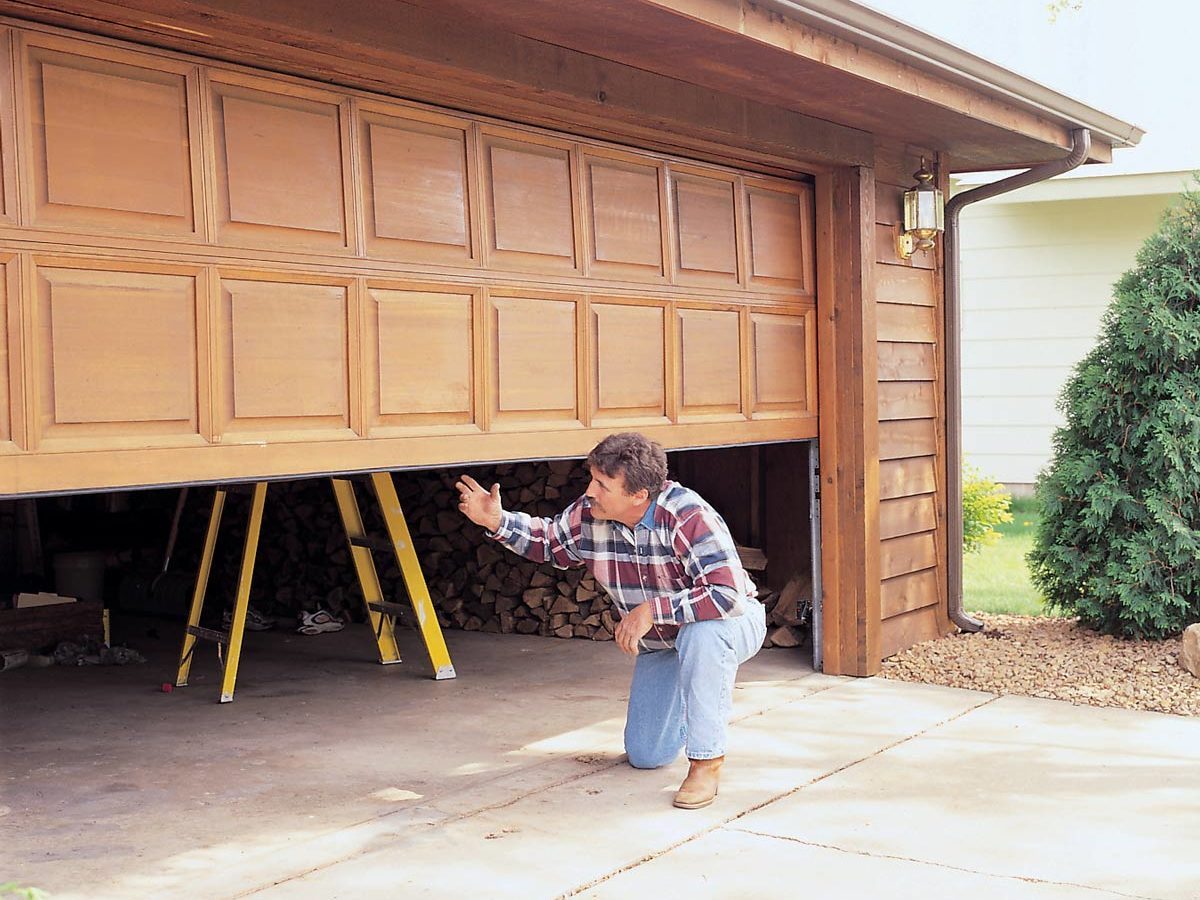
Checking Garage Door Balance
A properly balanced door is less likely to injure someone or something and keeps the door opener from working too hard, which will shorten its life.
To check the balance on a door, close the door and then disengage the opener by pulling the opener release handle. Manually pull up the door about halfway and let go. A properly balanced door will stay in the halfway position by itself. If it falls, the tension needs to be increased. If the door rises, the door spring has too much tension, which means it’s working harder than it needs to.
Check the door a couple times a year. Adjusting the spring tension is tricky and dangerous. Call a garage door professional to perform the service.
Read on to find out the home repairs you can do in 10 minutes or less!